Join us for the first academic walkthrough of our exhibition programme as we welcome Marco Bohr, Associate Professor in Design and Digital Art at Nottingham School of Art & Design.
This event marks the beginning of a series of short, informal, academic-led talks and tours of the Bonington Gallery exhibition programme. These sessions provide our academic colleagues with an opportunity to share insights, spark discussion, and share research that resonates with the themes of our exhibitions.
Marco’s research is concerned with the role that images play in the shaping of a variety of discourses related to politics, gender, identity, sexuality, censorship, ethics and disasters. Drawing on his background as an exhibiting photographer, Marco’s research interest is principally focused on the photographic image — not only as a medium of visual expression but also as a research methodology and a tool for political activism.
Marco’s research interest also extends to visual propaganda, cinema, documentary and essay film. His book “Visual Counterculture in Japan” was recently published by Bloomsbury.
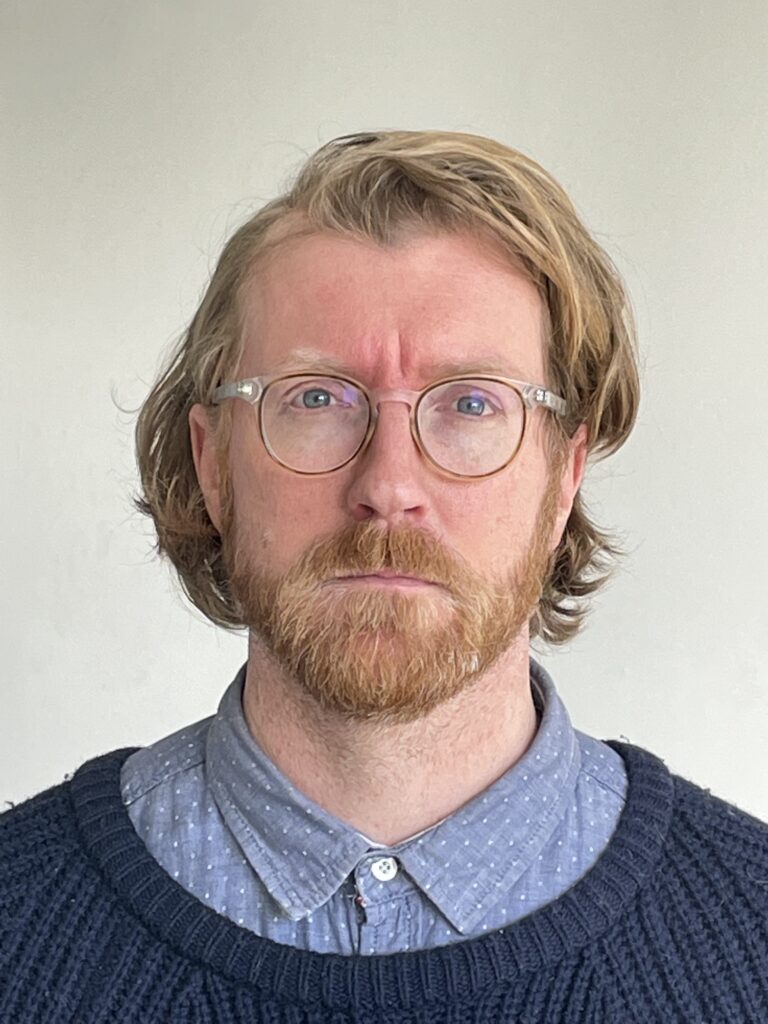
Bonington Gallery presents A Semester in Nottingham, 1976, an exhibition of photographs by Baltimore-based John Dean. Captured during his time as a visiting student to Nottingham Trent University (NTU) in 1976, these photographs offer a powerful glimpse into Nottingham life during a transformative era.
This exhibition marks a poignant return to the institution — formerly Trent Polytechnic — where John studied as a visiting student nearly fifty years ago.
Armed with a camera and a quiet curiosity, John immersed himself in the rhythms of Nottingham life. Over the course of a single semester, he wandered the city’s streets and parks — Hyson Green, Market Square, the Arboretum — capturing striking black-and-white portraits of residents going about their daily lives. The resulting images are both documentary and deeply personal, offering a rare and intimate glimpse into the everyday lives of Nottingham’s people during a transformative era.
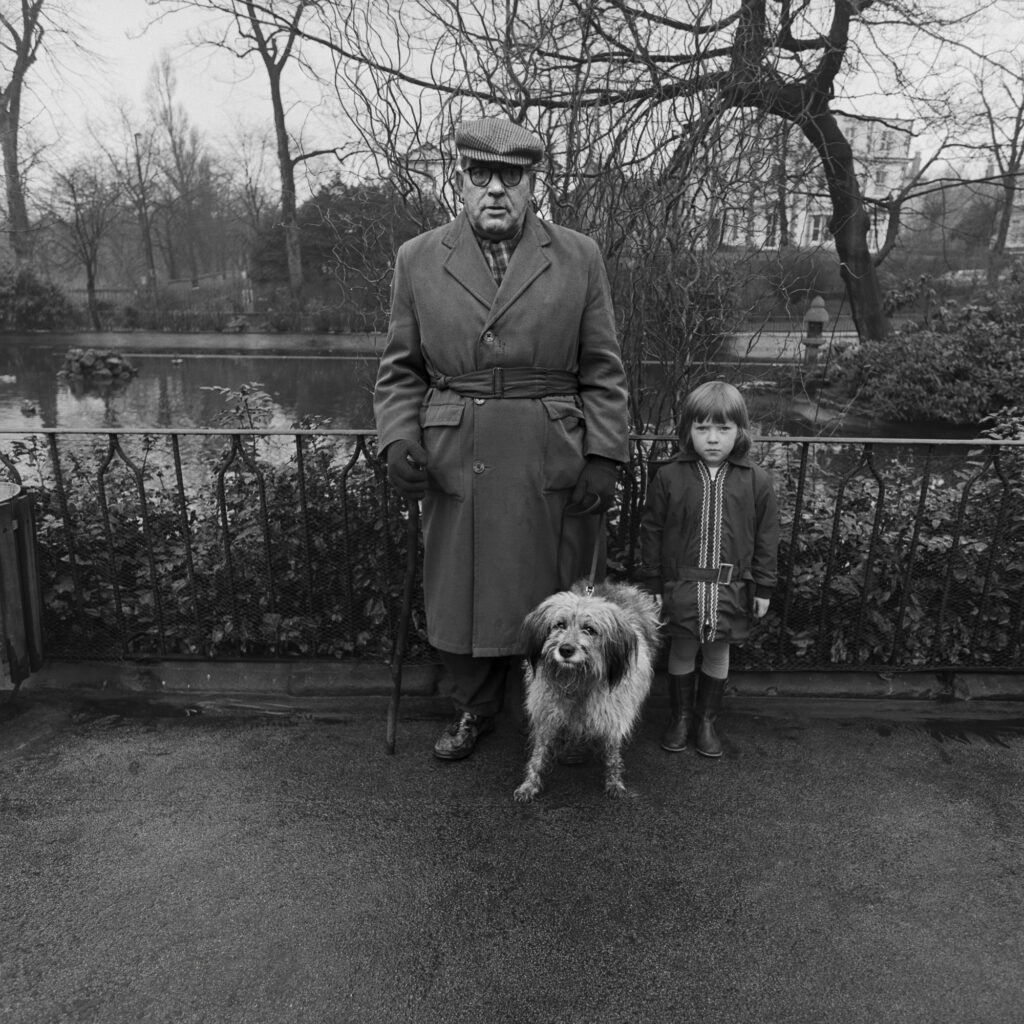
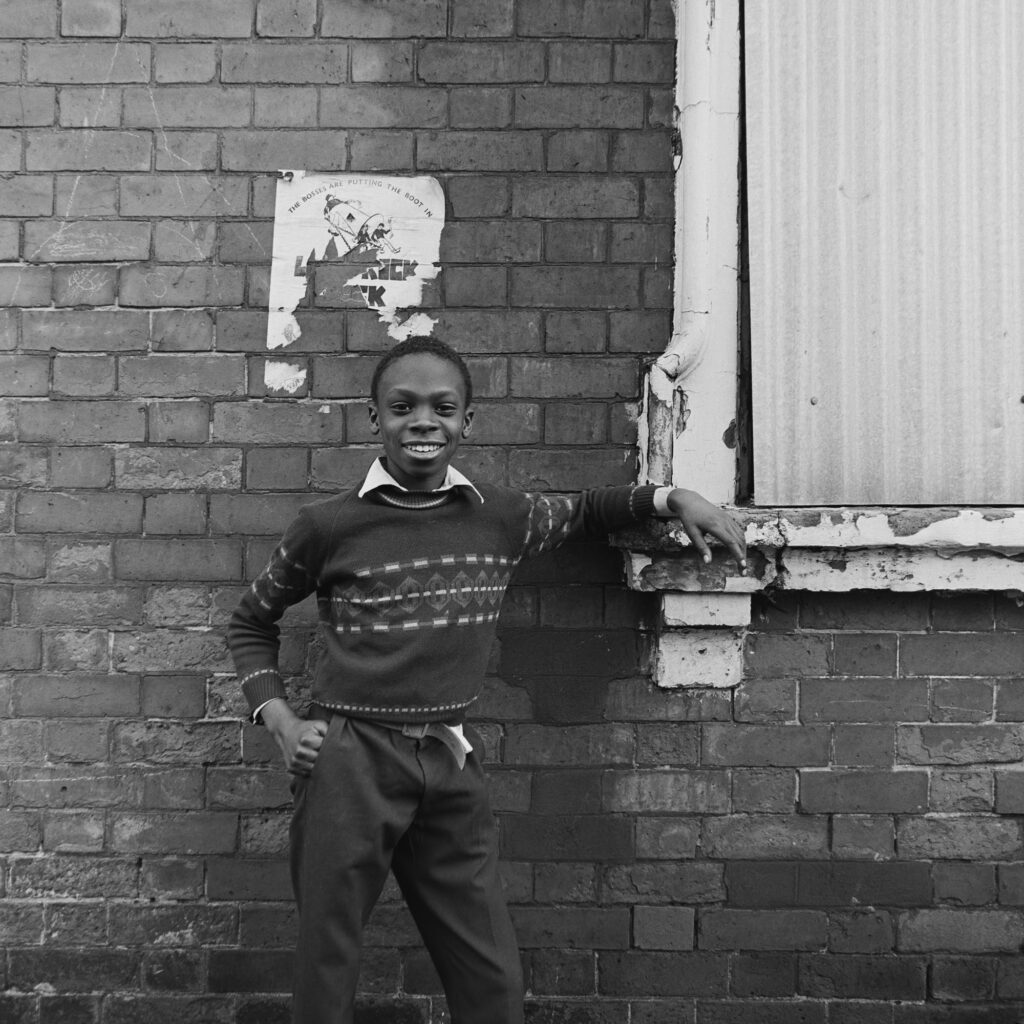
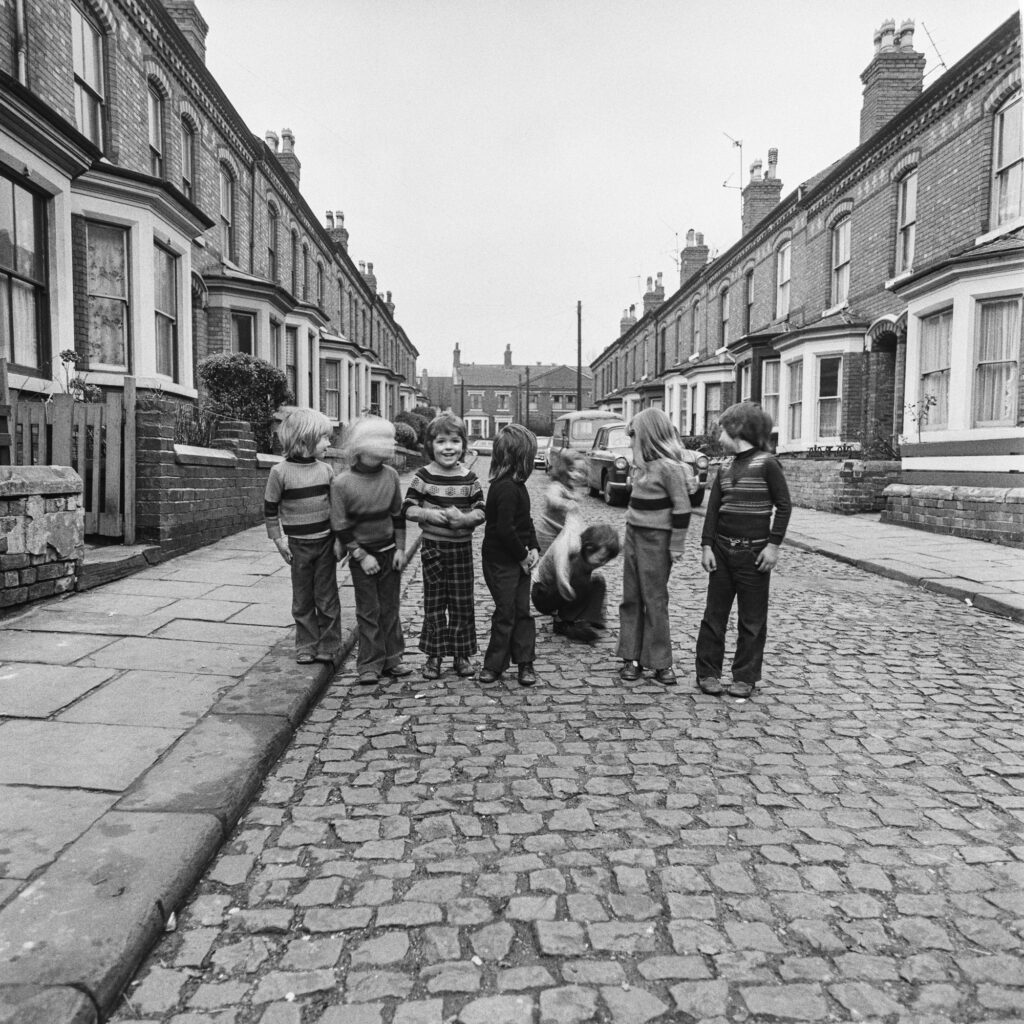
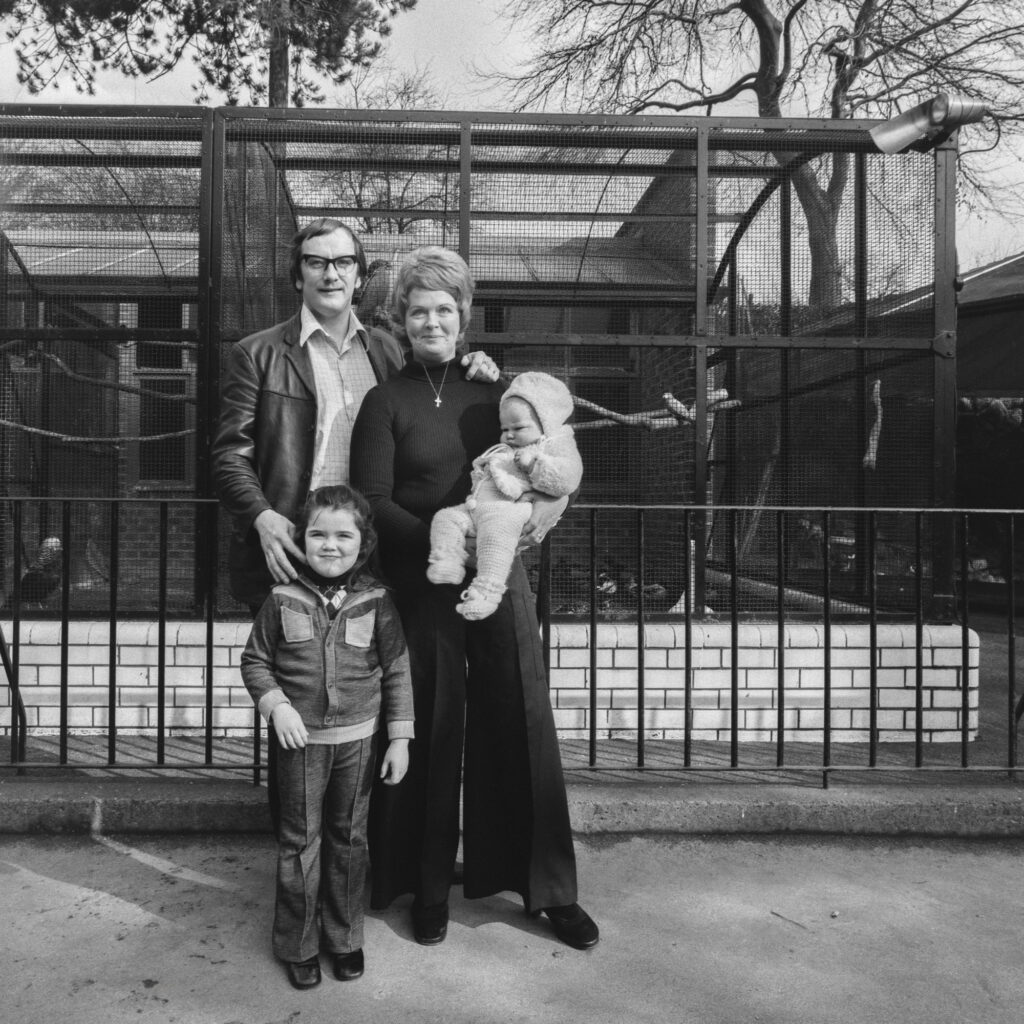
First developed in Trent’s own darkrooms (situated next door to the gallery), these photographs have remained largely unseen for decades. Now, they return to the place of their origin, standing as a testament to the power of observational storytelling, told through the eyes of a visitor to the city.
John has since built a distinguished career as a producer and videographer, creating historical and educational media for museums and non-profit organisations across the United States and beyond. Yet photography remains his first and most enduring creative language — a medium through which he continues to explore the intersections of memory, environment, and human experience.
John Dean is a Baltimore-based photographer, videographer who graduated with a BFA from the Maryland Institute College of Art. He regularly works with museums, non-profit organisations and editorial platforms on the creation of educational and historical media and content.
In addition to institutional work, John’s independent photographic practice has taken him across the world, exploring historic and cultural sites of significance, such as excavation sites in Greece and sacred spaces in Istanbul. As a long time mentor and arts advocate, John is consistently guided by a curiosity for human stories.
Join us for the launch of our latest exhibitions — new film and textile work by multi-disciplinary artist Ibiye Camp, exploring the complex interplay between infrastructure, care, and resilience along the coast of West Africa.
layt de kam critically examines the deployment of temporary power ships along West African coasts as a response to energy shortages. The work reflects both hope and uncertainty, emphasising the fragility of these energy solutions while honouring the resilience of coastal communities.
Accompanying layt de kam in our Vitrines is Through Our Eyes, In Our Words, an exhibition presenting stories of ageing, belonging, and inclusion among middle-aged and older-aged LGBT+ people in Britain.
Enjoy a free welcome drink, delicious food (first come, first served!) and music by multidisciplinary artist Fauzia.
All welcome but reserve your free ticket to avoid disappointment.

Bonington Gallery is delighted to present Through Our Eyes, In Our Words, an exhibition exploring stories of ageing, belonging, and inclusion among middle-aged and older-aged LGBT+ people in Britain.
What does it mean to belong? To grow older? To feel heard, seen, recognised?
Spanning LGBT+ History Month 2026, this exhibition from the IncludeAge project invites you to engage with the experiences of middle-aged and older-aged LGBT+ people in Britain today. Reflected through photographs, personal objects and testimony, LGBT+ people share what matters to them: the places they love and where they feel seen, and the everyday moments that shape who they are.
These artefacts don’t come from behind a lens held by someone else. They were taken by the people whose stories they tell. Some might identify as artists or creative practitioners, others not. Each photo and object is a choice – of what to show, how to show it, and what it means. Some speak of joy and celebration. Others quietly express frustration or longing—all of them reflect lives lived with strength, humour, creativity, and care.
The IncludeAge project (2022-26) explores experiences of inclusion and exclusion among diverse middle-aged and older aged people (40+), in physical places and online spaces..
The project specifically engages with LGBT+ individuals and people with learning disabilities. Its goal is to build on the insights shared by participants and use them to develop solutions that foster more inclusive communities.
The project is led by Professor Judith Sixsmith at the University of Dundee, in partnership with the University of Hertfordshire, Liverpool John Moores University, and the University of Edinburgh. Several organisations are also involved in the project, including Tonic Housing, Sleeping Giants, and Outside the Box, among others.
At Bonington during LGBT+ History Month 2026, Through Our Eyes / In Our Words showcases the richness of LGBT+ voices, histories, and imagery emerging through the project. Exhibitions elsewhere in the country will showcase material relating to the participants with learning disabilities.
For more information, please contact Dr Richard Vytniorgu (r.vytniorgu@herts.ac.uk).
Photo: Rosie Gardener
Join us for the launch of the first exhibition of the academic year, a two-person exhibition by William English and Sandra Cross bringing together film, photography, sculpture, sound, and archival material formed independently and collaboratively over several decades.
To Farse All Things offers a rare opportunity to explore the intertwined lives and practices of two artists whose work resists categorisation. Through a shared and uncompromising commitment to experimentation, hospitality, and social engagement, English and Cross have cultivated a body of work that is as generous as it is radical.
As part of the 28th instalment of the Bonington Vitrines series, we’re delighted to present Someone’s Doing Something, a project by London-based curatorial, research, and archival platform Gestures, developed in dialogue with writer Isabelle Bucklow.
Enjoy a free welcome drink, delicious food (first come, first served!) and music.
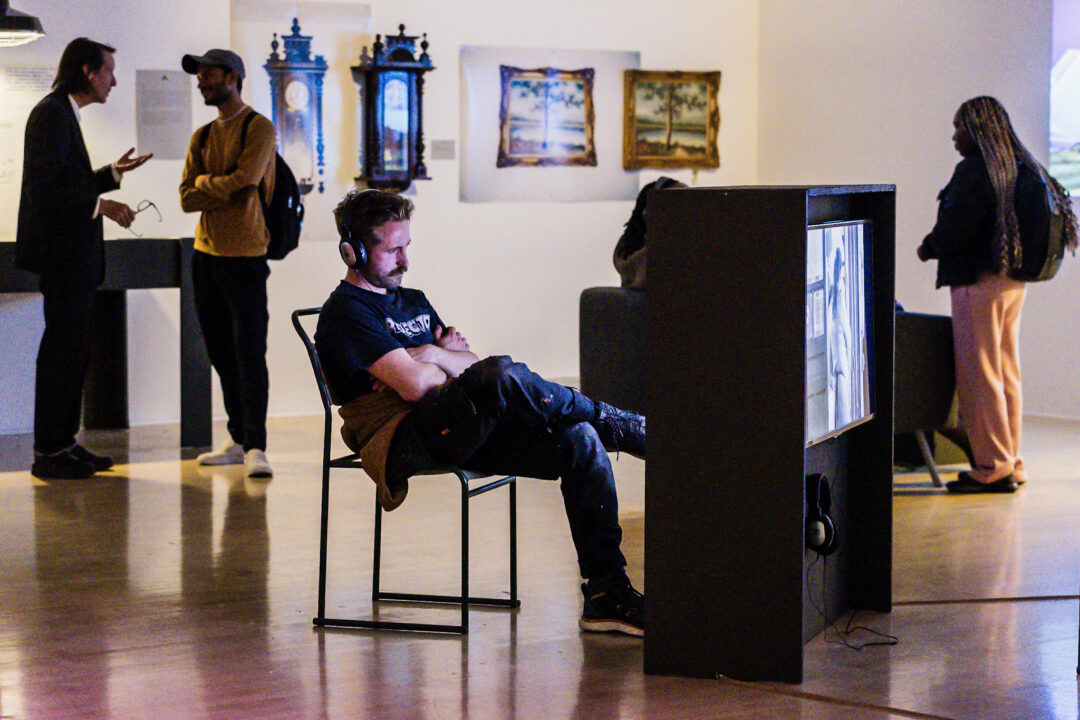
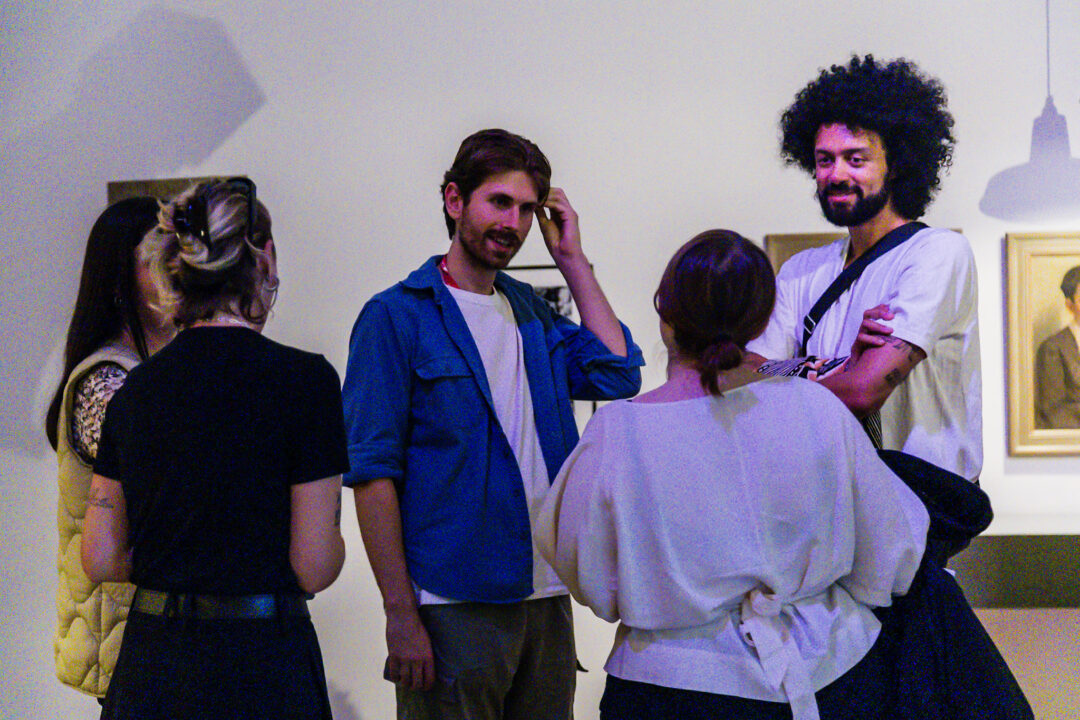
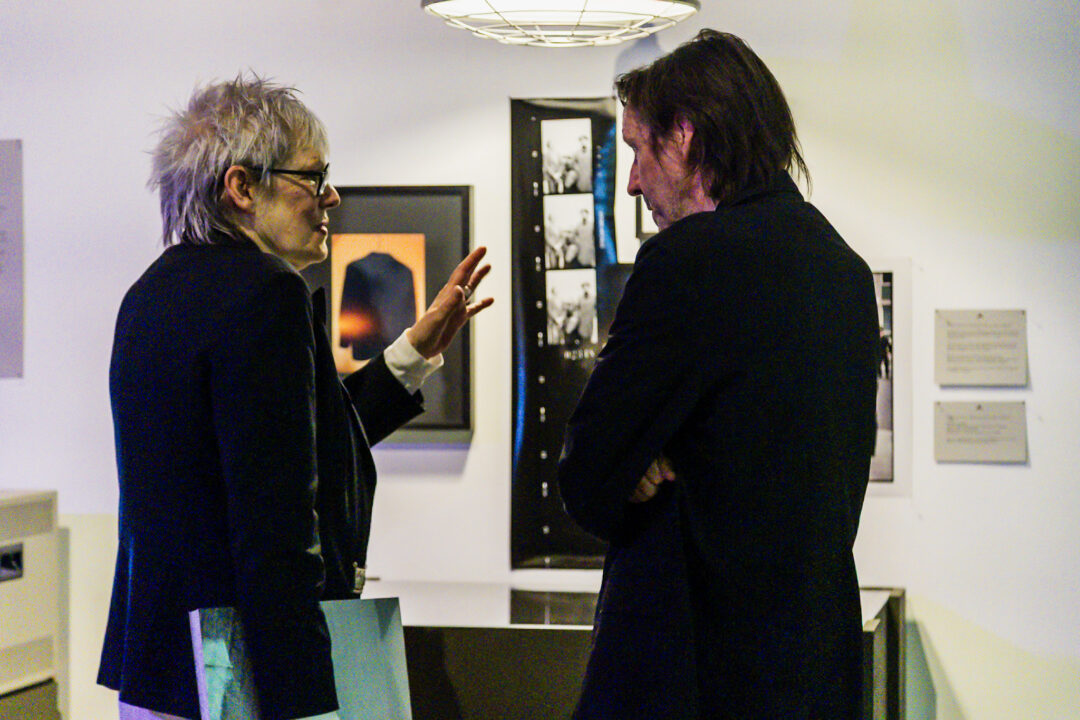
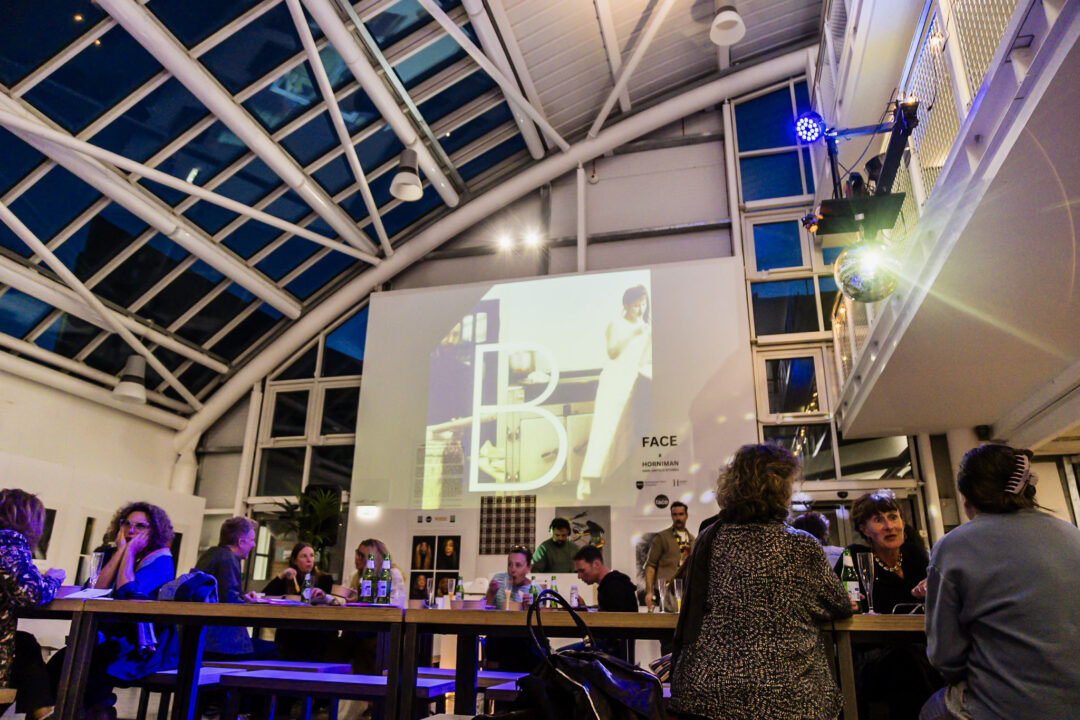
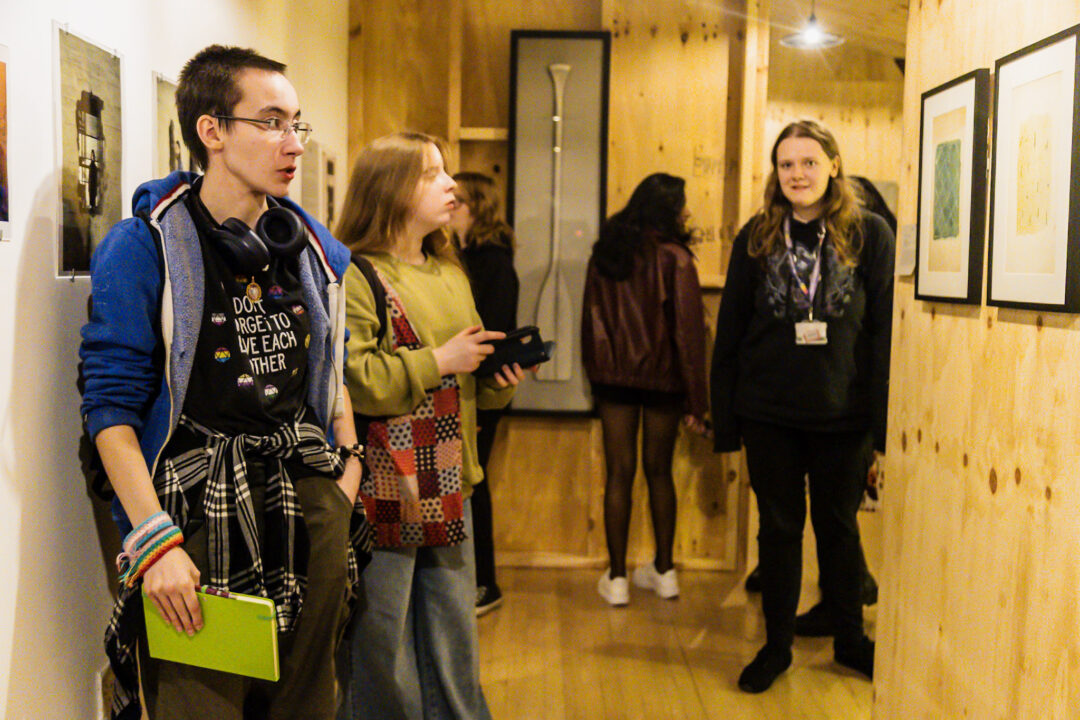
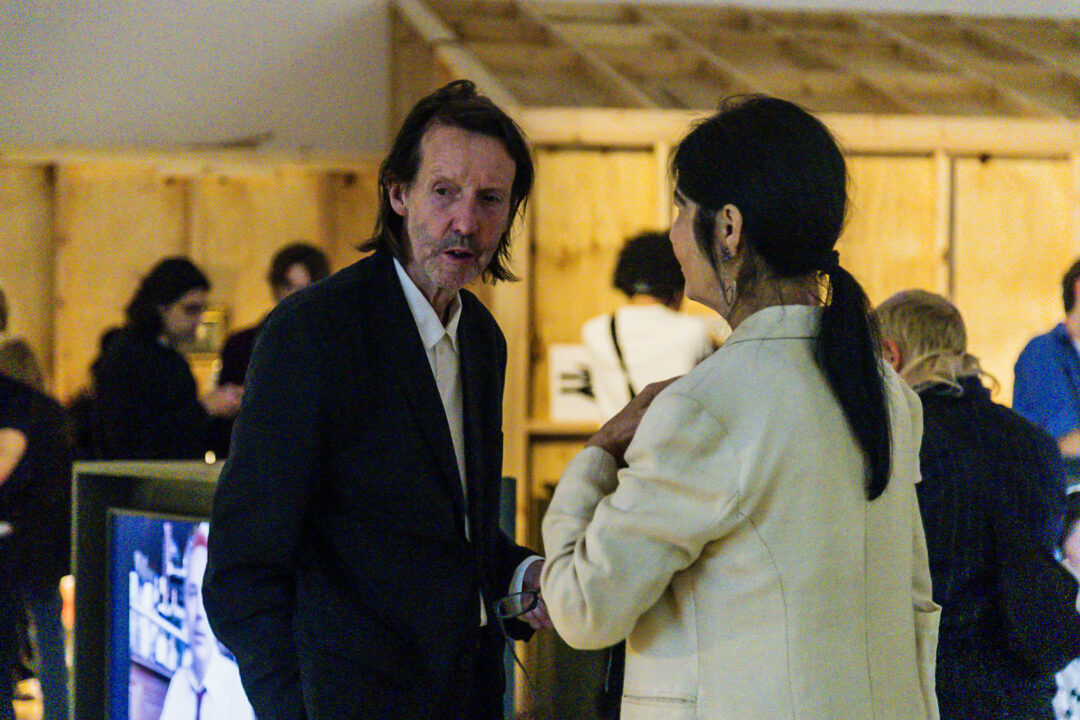
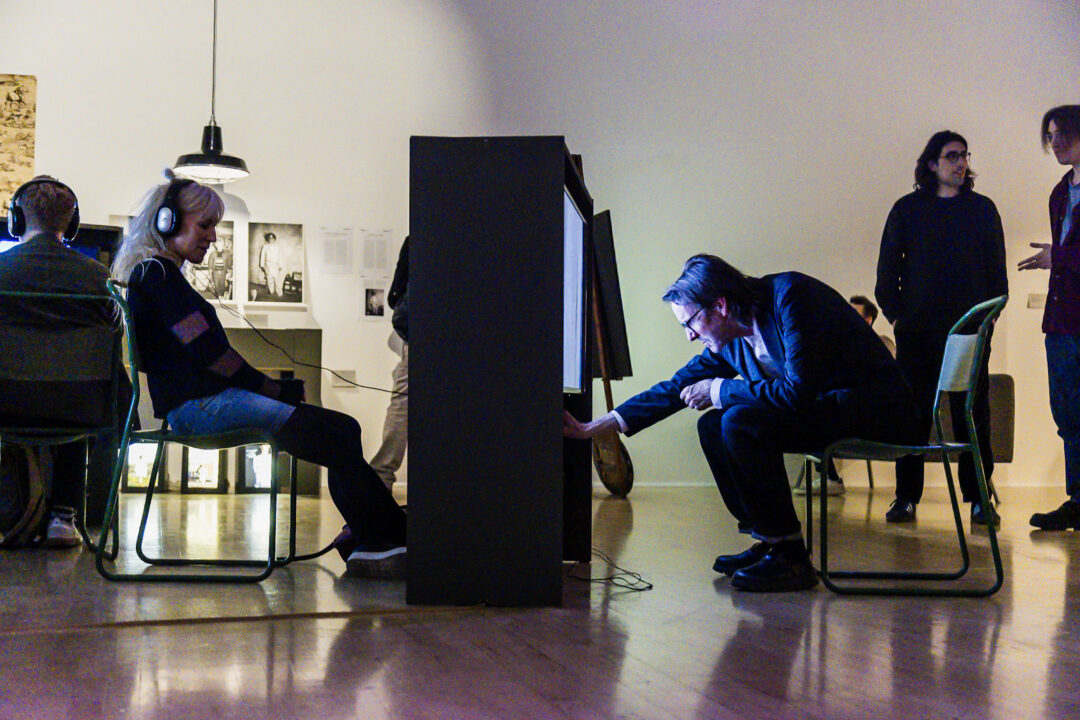
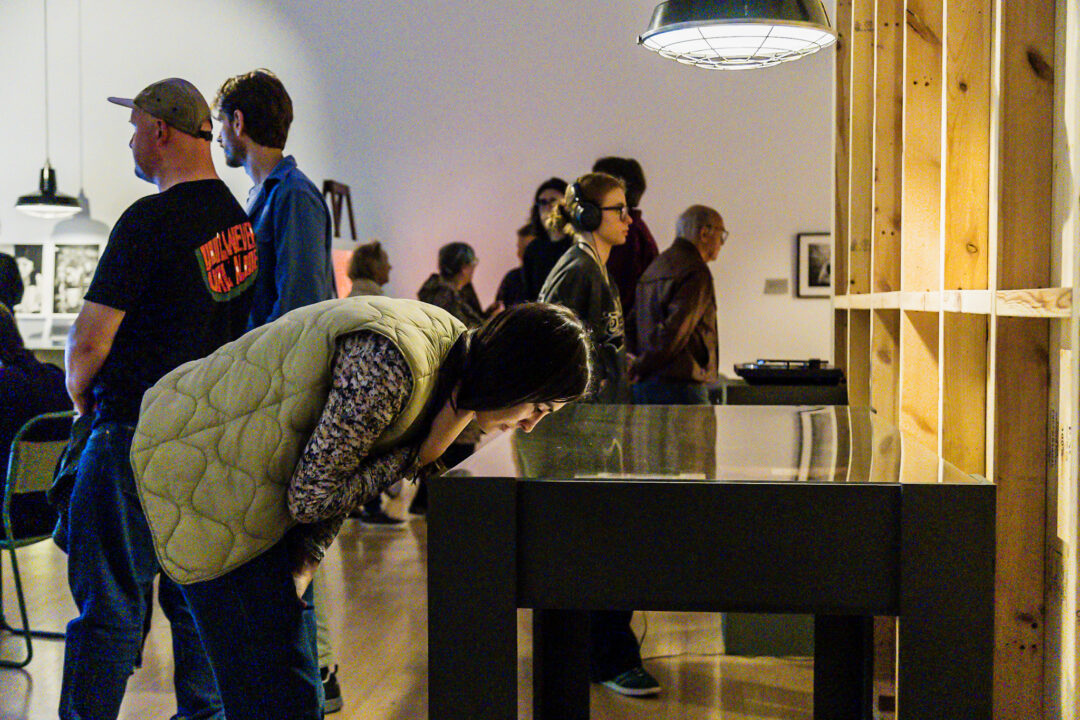
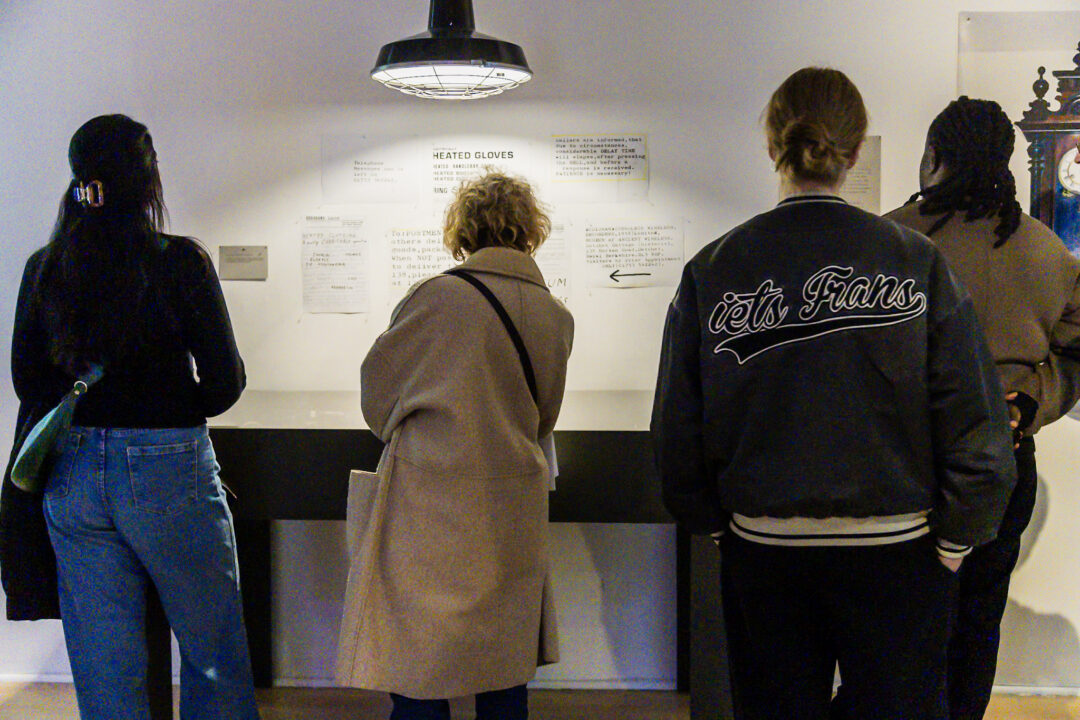
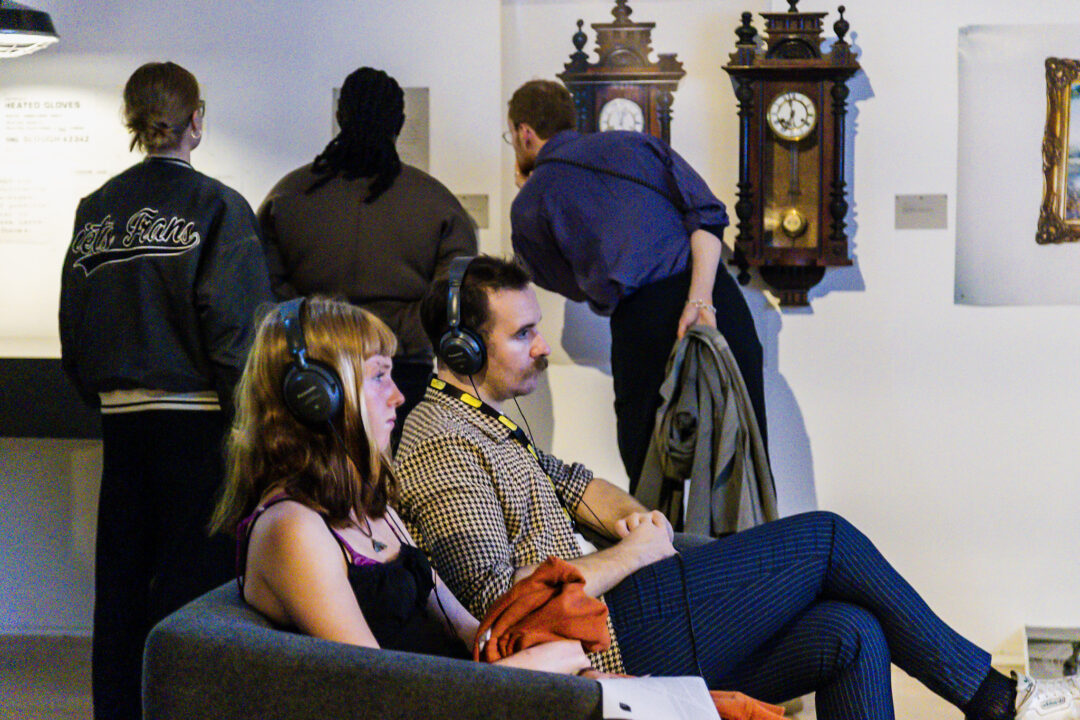
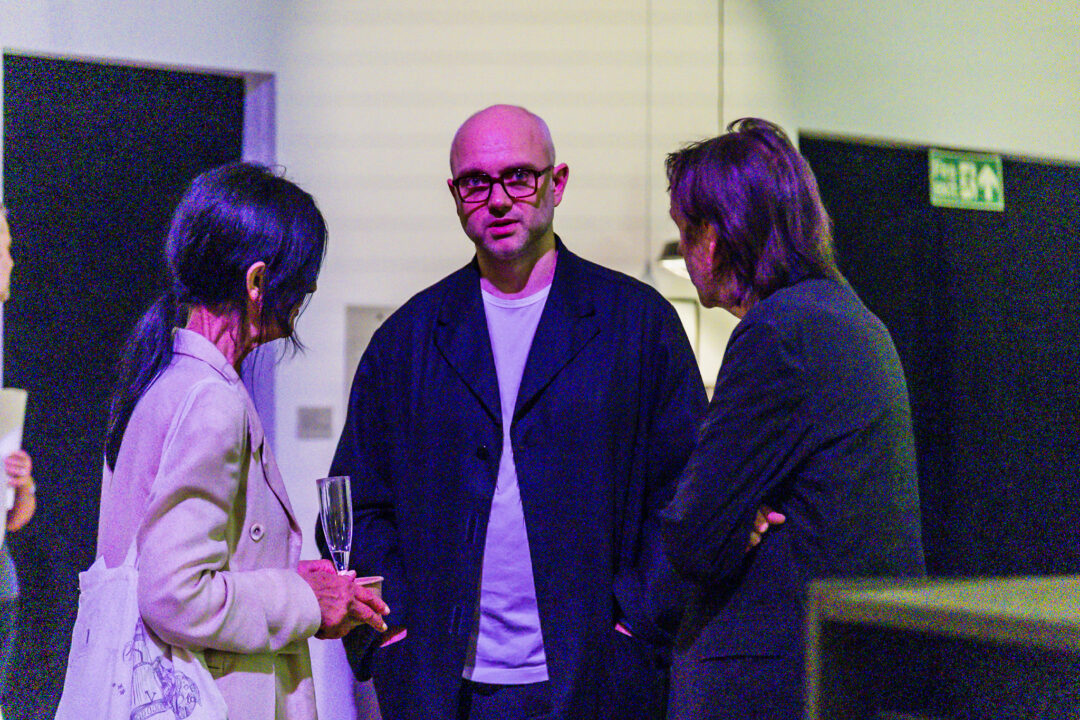
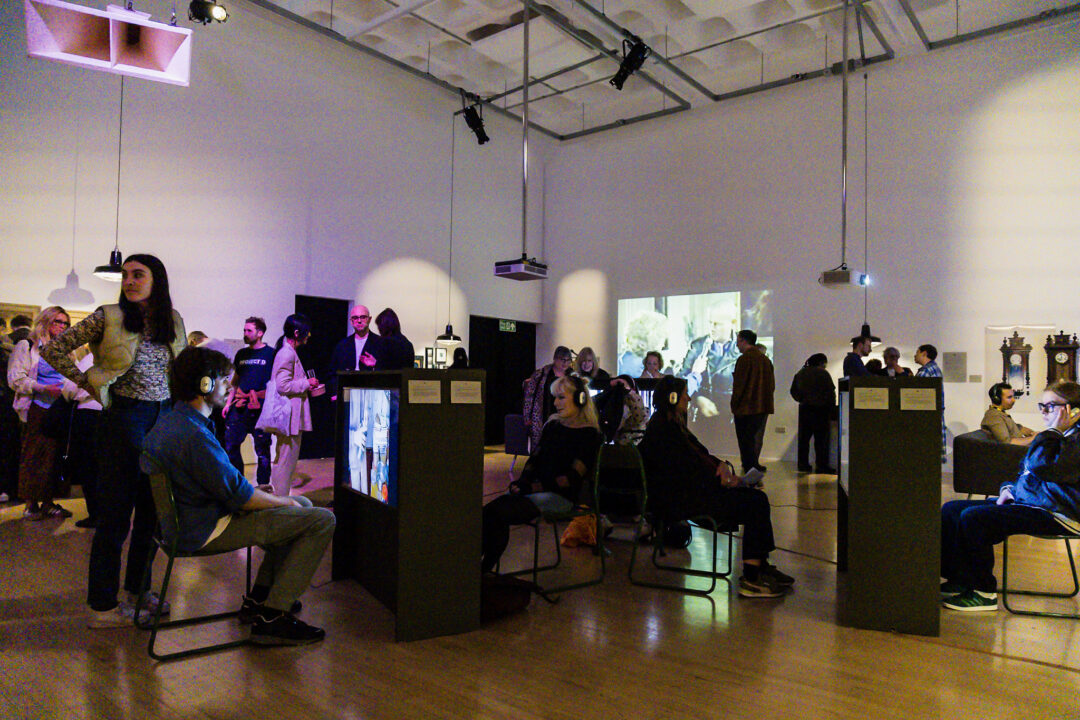
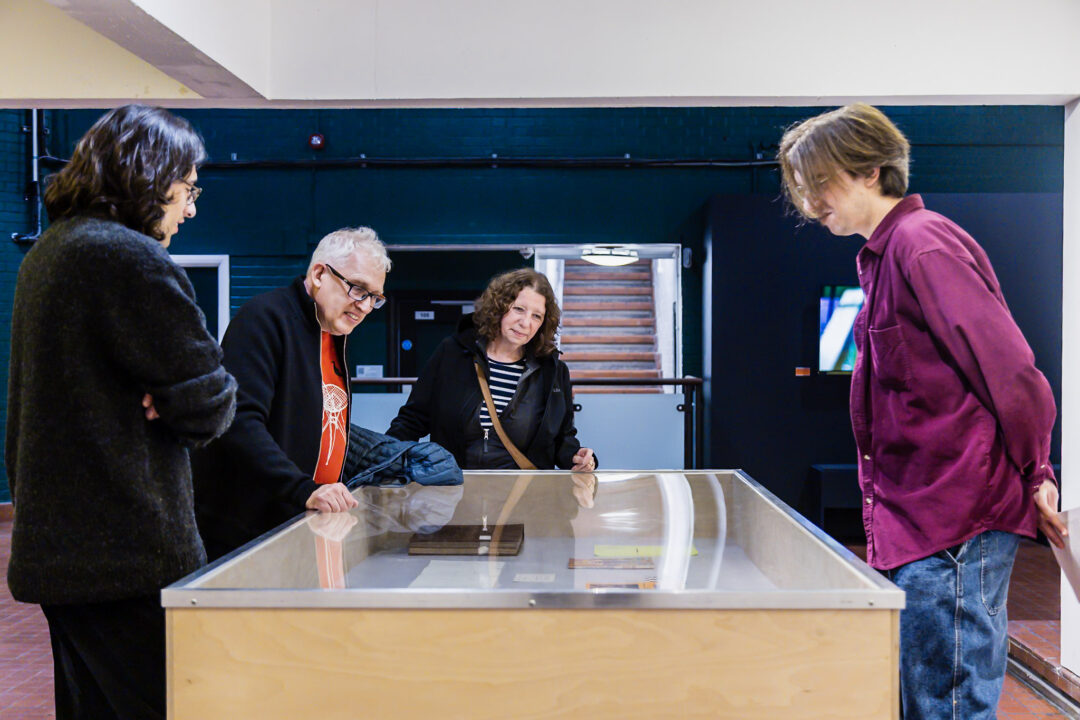
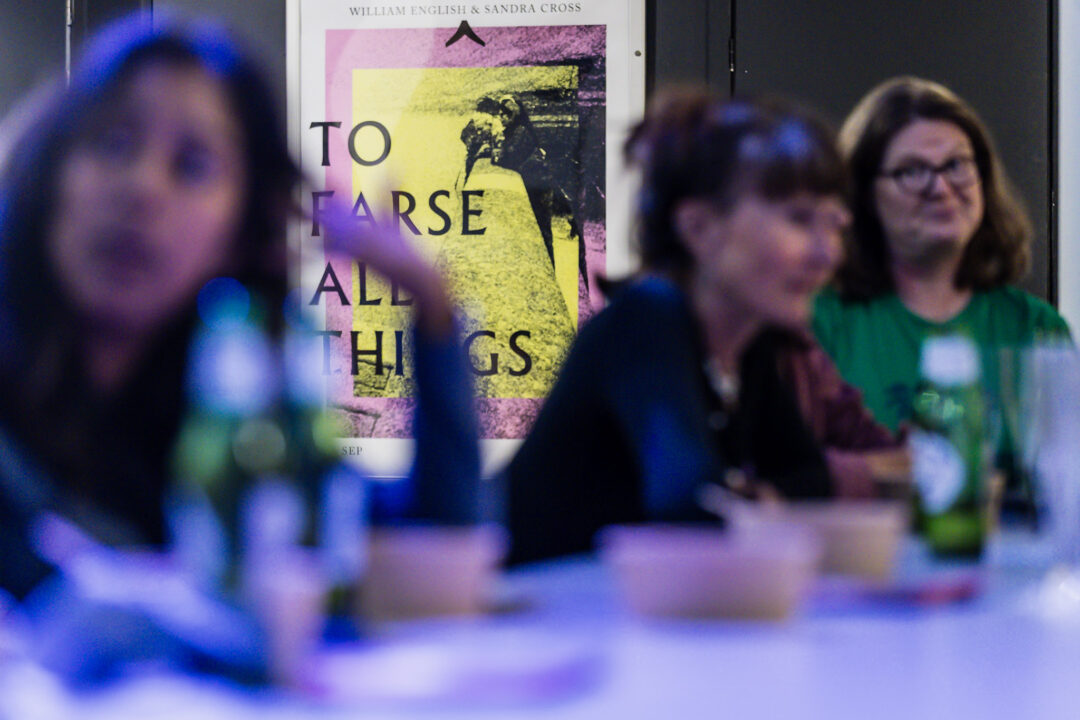
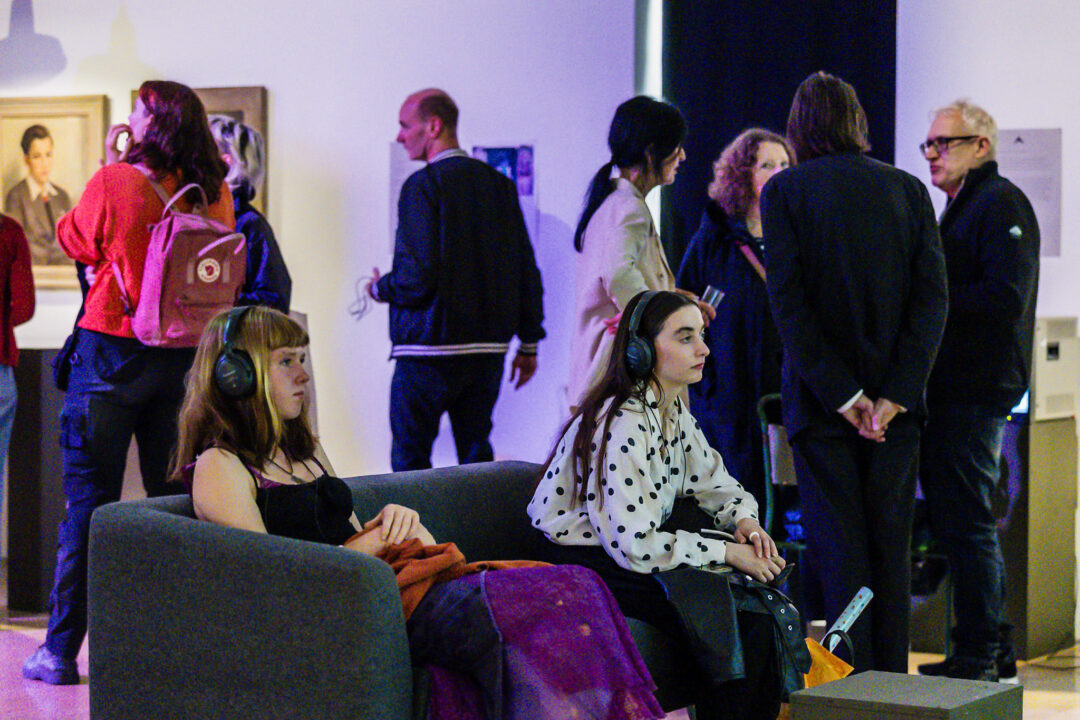
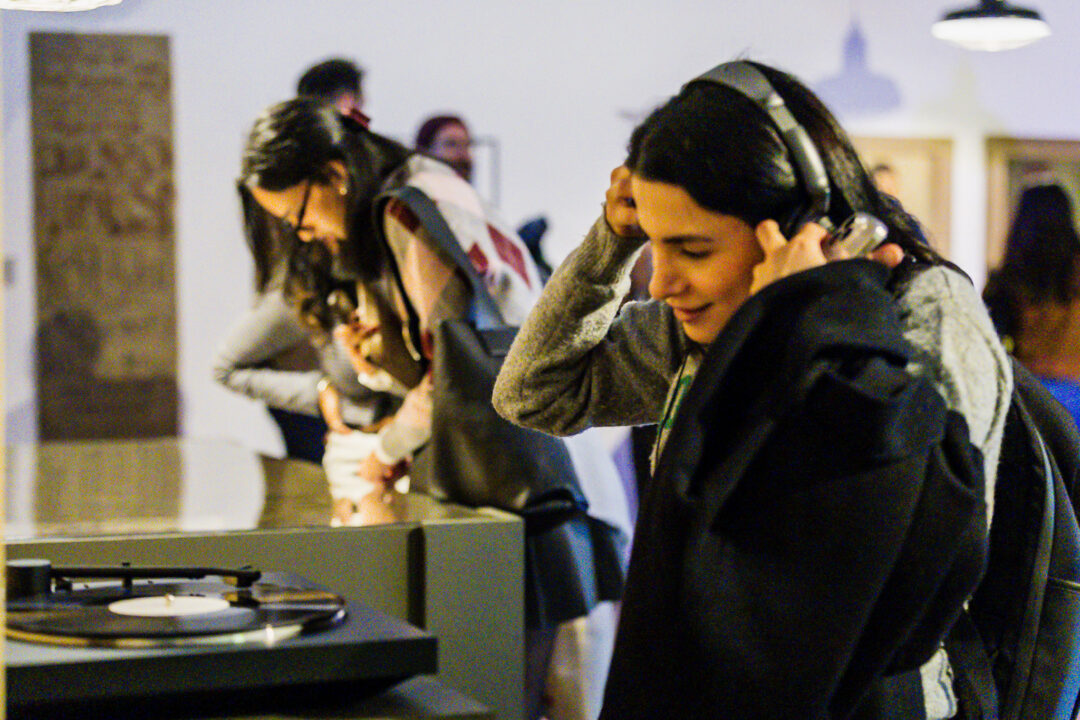
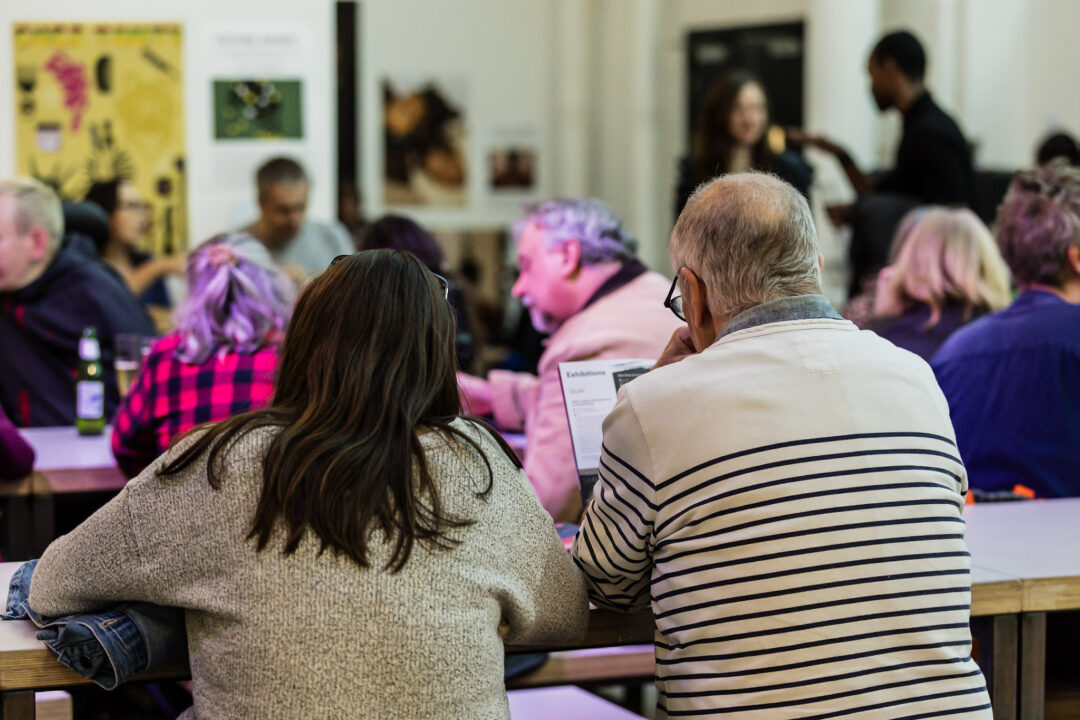
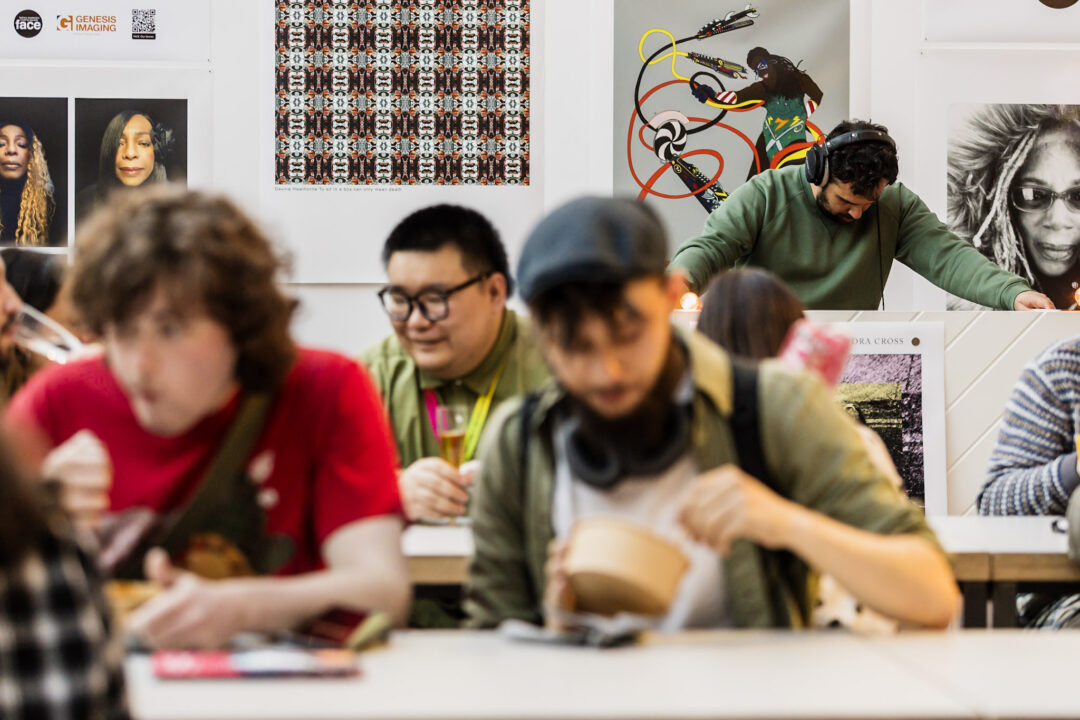
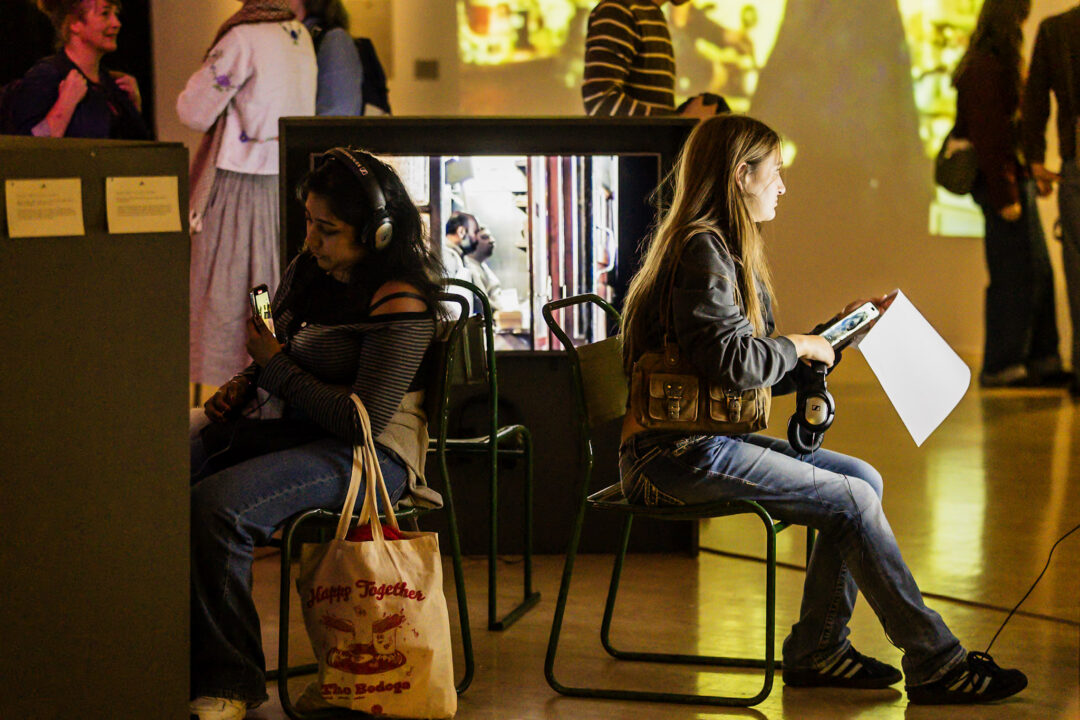
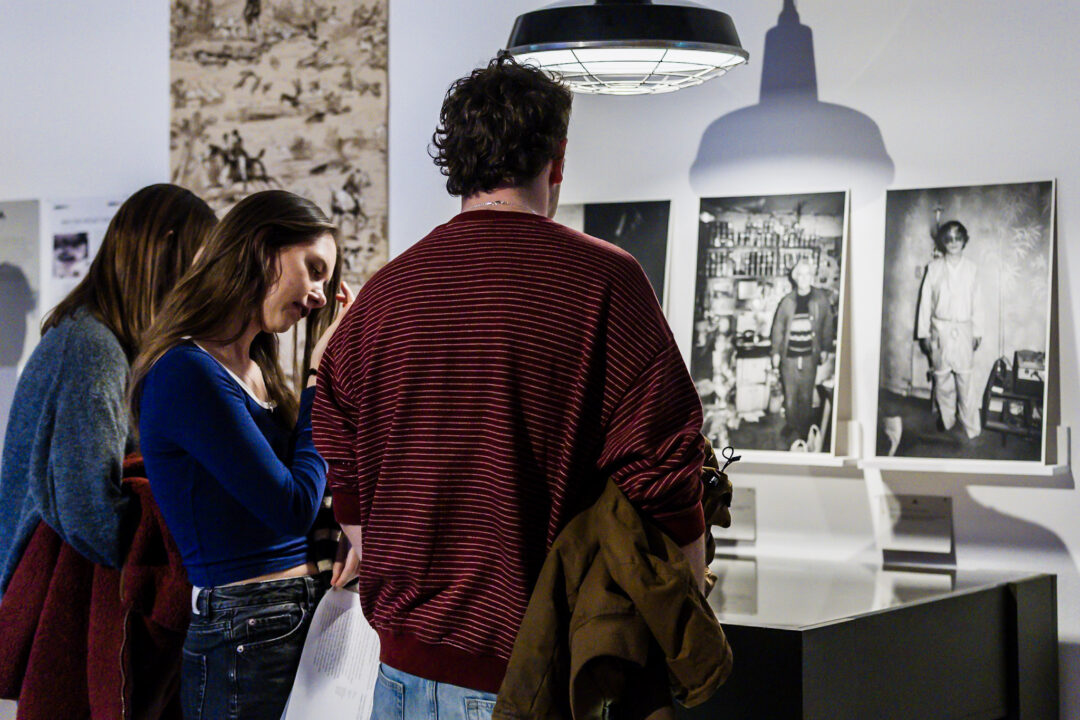
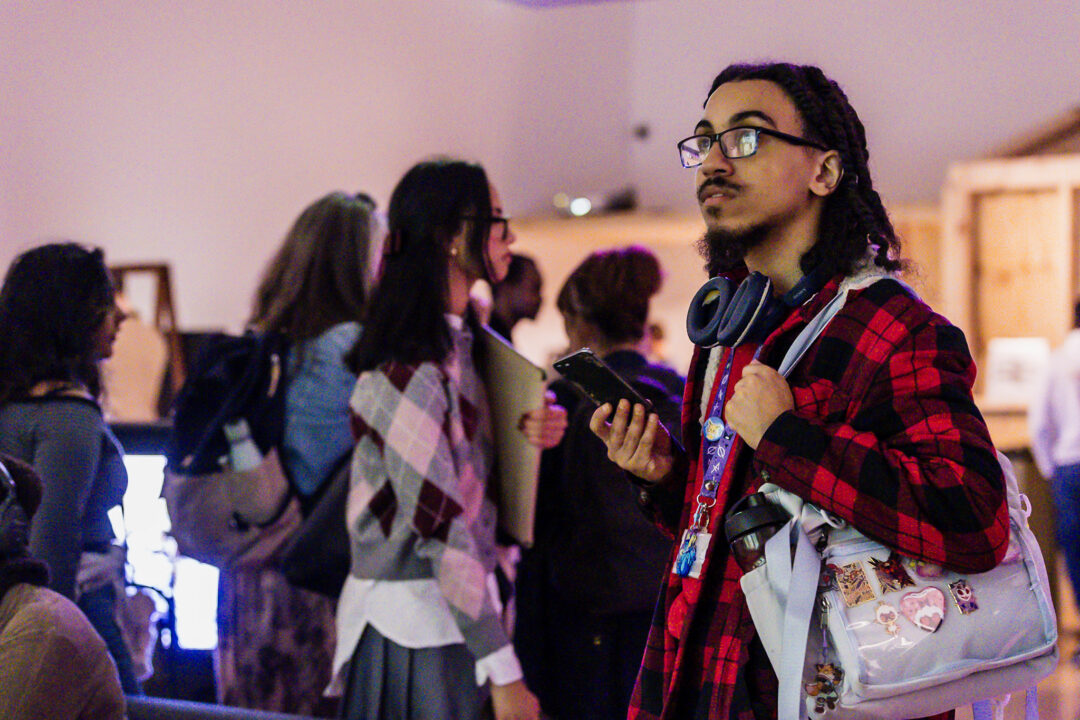
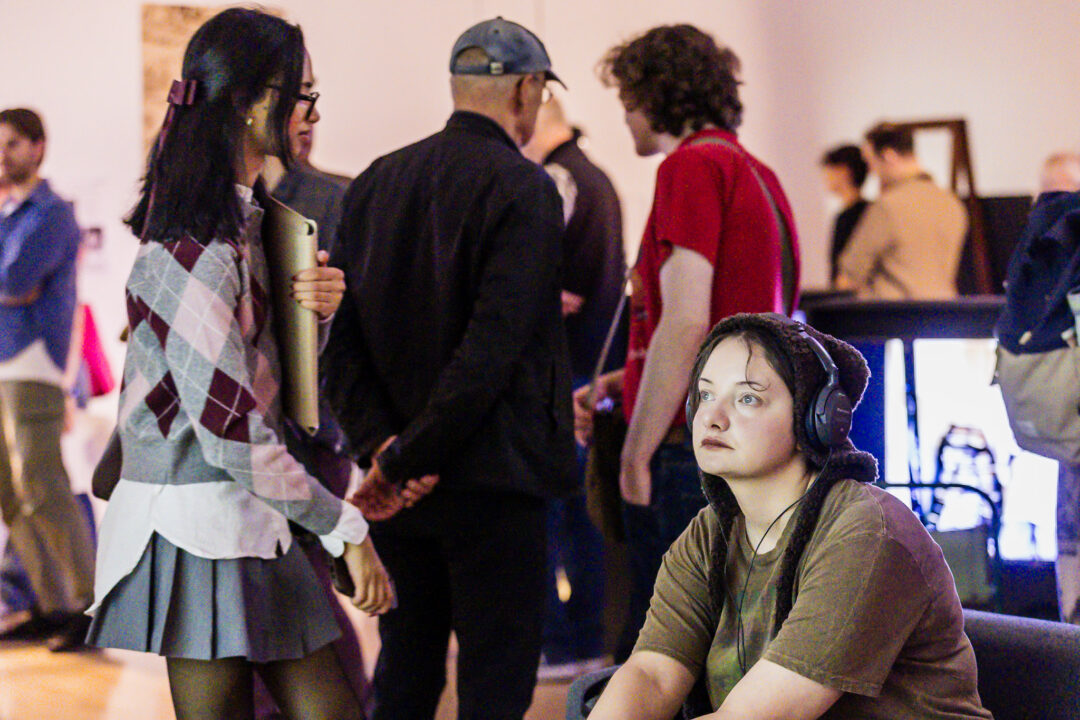
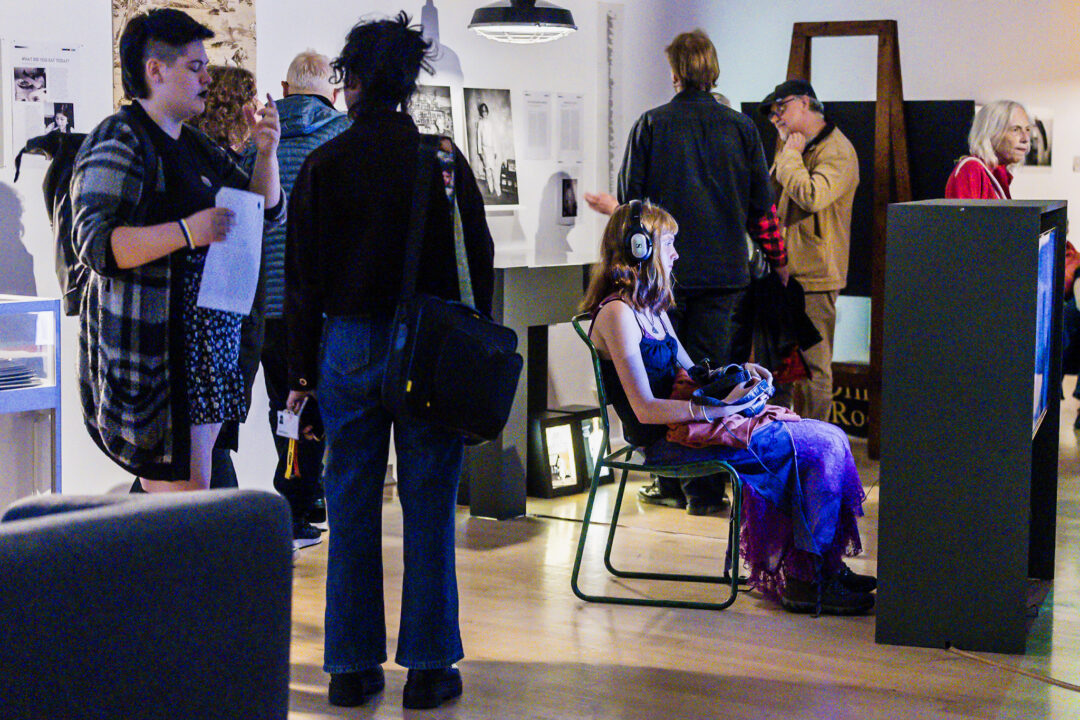
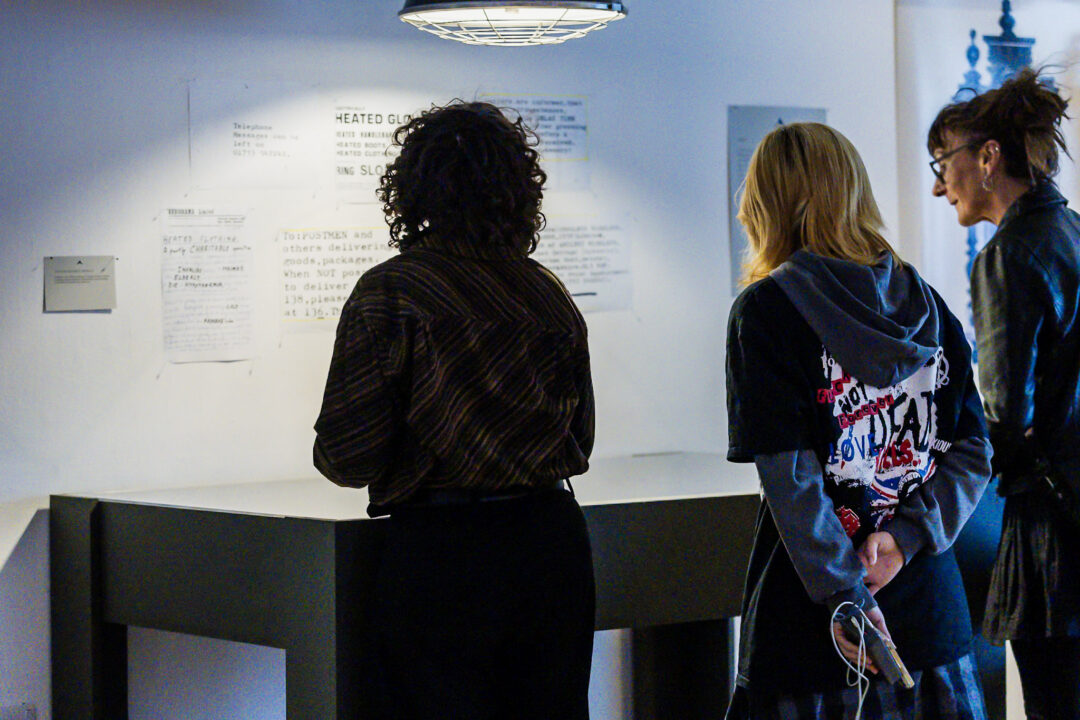
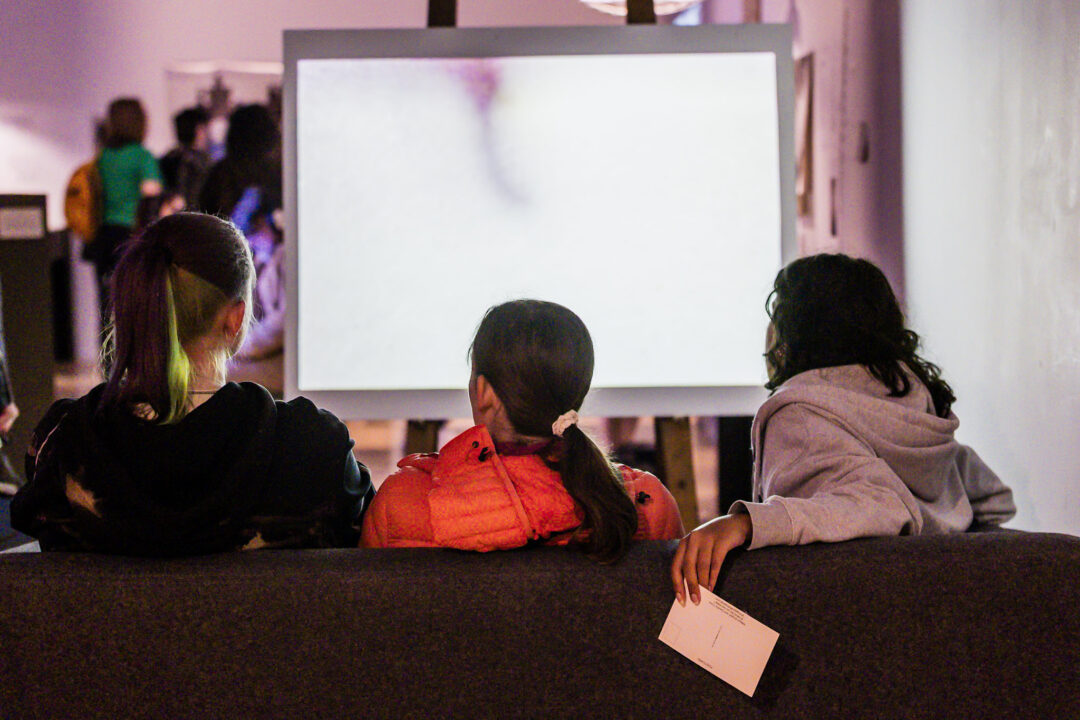
For the 28th instalment of the Bonington Vitrines series, we’re delighted to present Someone’s Doing Something, a project by London based curatorial, research and archival platform Gestures, developed in dialogue with writer Isabelle Bucklow.
This project, featuring artists such as Stuart Sherman, Simon Moretti, and Yvonne Rainer, will present a selection of work that explores gesture as a form of artistic expression. Whilst some gestures are recorded through notation or residue, others survive only in documentation or retelling.
The works in Someone’s Doing Something reflect a broad range of these approaches, from the formal to the informal, the scripted to the instinctive, and considers these against shifting times and contexts.
In considering the location of the Bonington Vitrines, as a space that is moved through by 100’s of people each day going about their daily business, this quote by theatre director Peter Brook is considered:
“I can take any empty space and call it a bare stage. A man walks across this empty space whilst someone else is watching him, and this is all that is needed for an act of theatre to be engaged” – Peter Brook.
Full list of artists: Simon Moretti, Allan Kaprow, Richard Schechner, Charlotte Moorman, Nam June Paik and Yoshi Wada, Mieko Shiomi, Sue Tompkins, Bruce McLean, Bruce Gilbert, with Angela Conway and Michael Clark, Stuart Sherman, Anastasia Coope, Yvonne Rainer, Ricky Jay.
Gestures is a London based curatorial, research and archival platform that has organised exhibitions, interventions and projects in locations as diverse as sidewalks in New York and Travelodge hotel rooms, as well as exhibition spaces such as the Postal Museum in London and 47 Bedford Street in London.
Gestures is currently conducting long term research into Situation, a space in London that existed in the 1970s that did early exhibitions with artists including On Kawara, Bruce McLean and Bas Jan Ader.
Along with colleagues WC2E9HA, The Everyday Press aka Bunker Basement and Whatever Anderson, Gestures will open the shared exhibition space Chequers in Summer 2025.
View checklist and text by Isabelle Bucklow here.
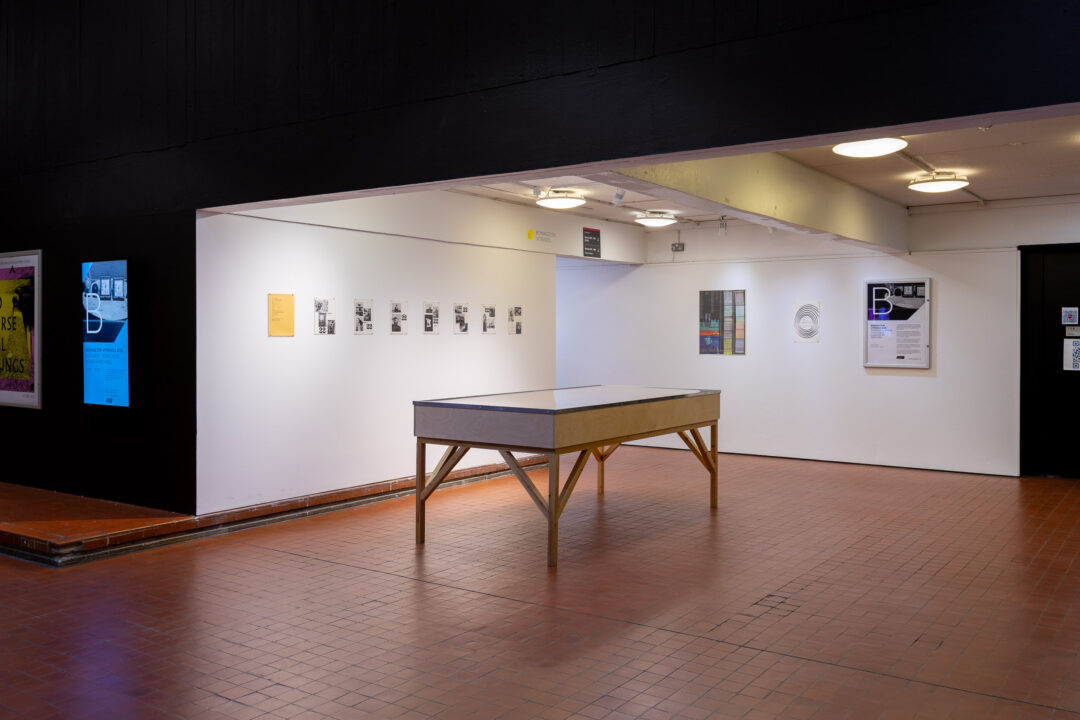
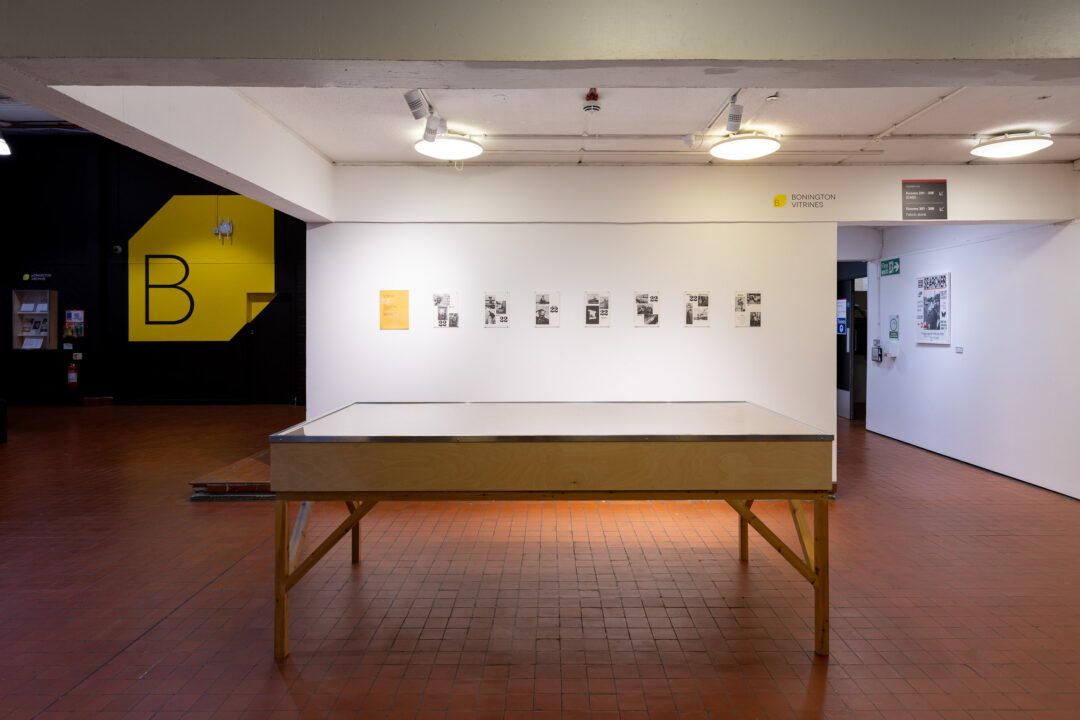
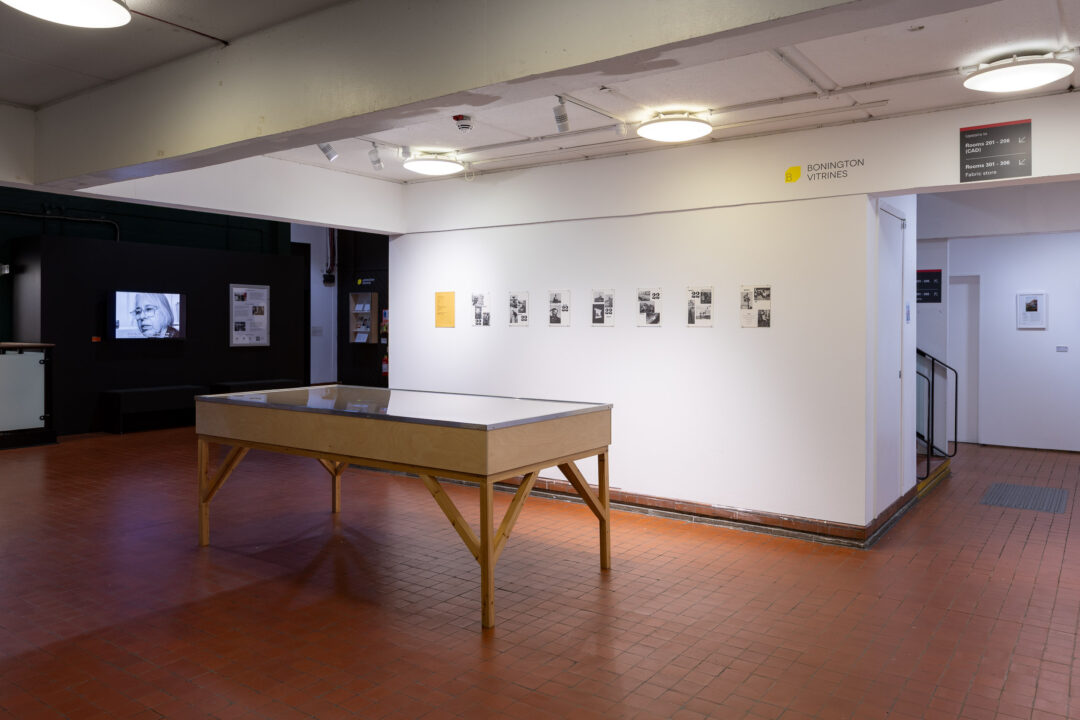
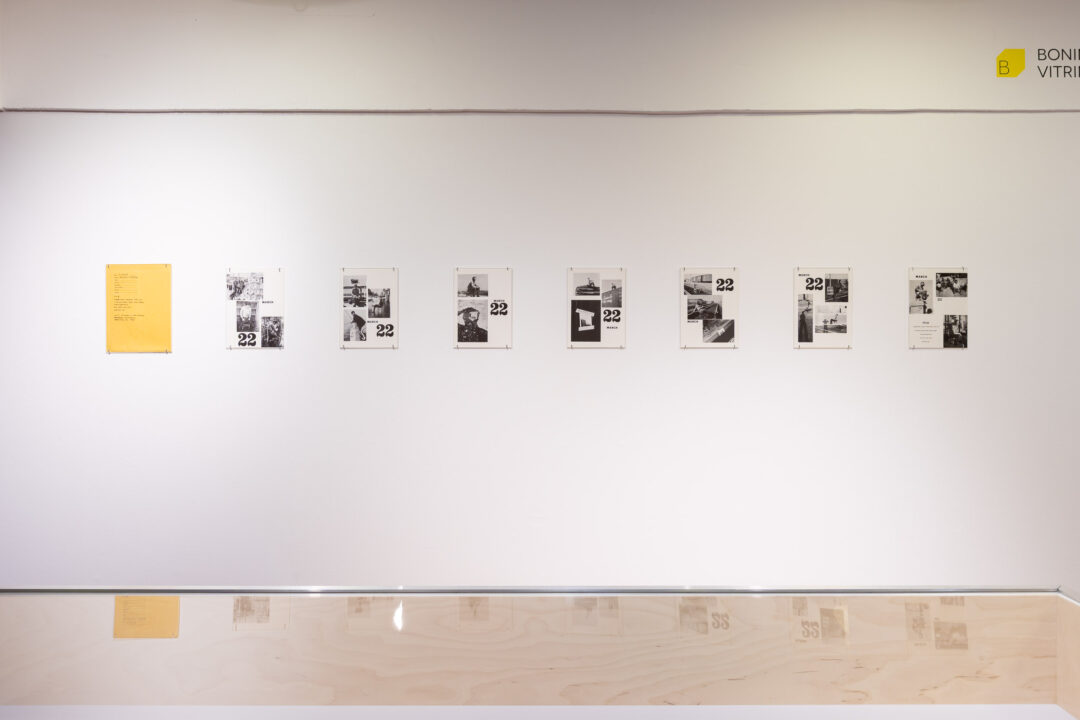
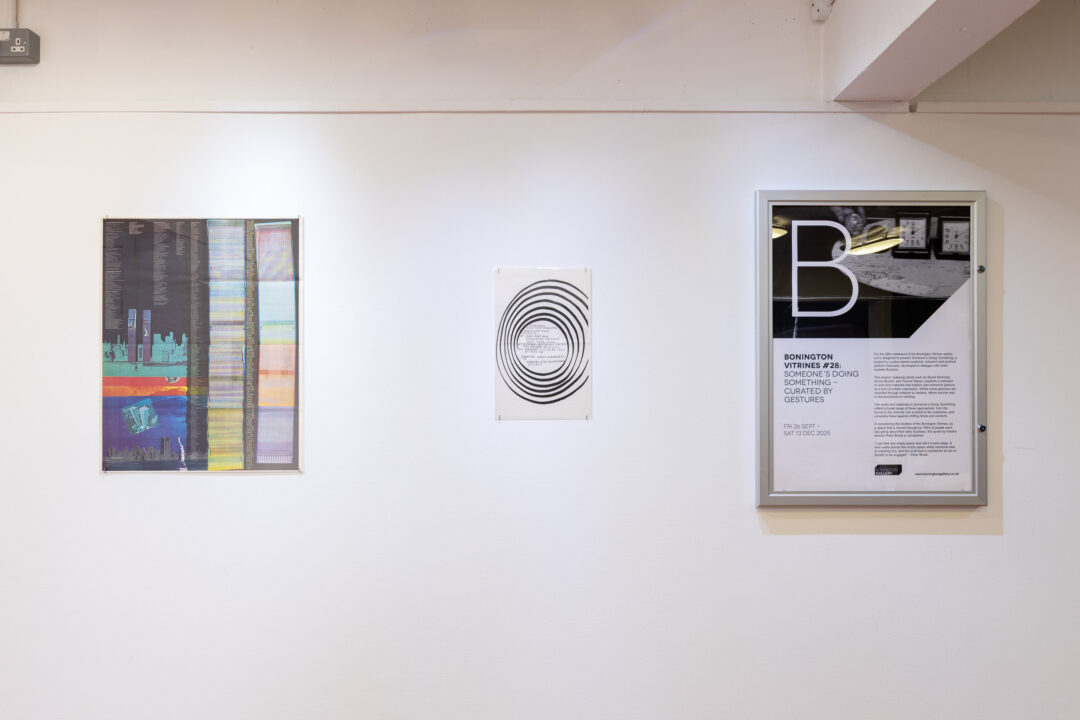
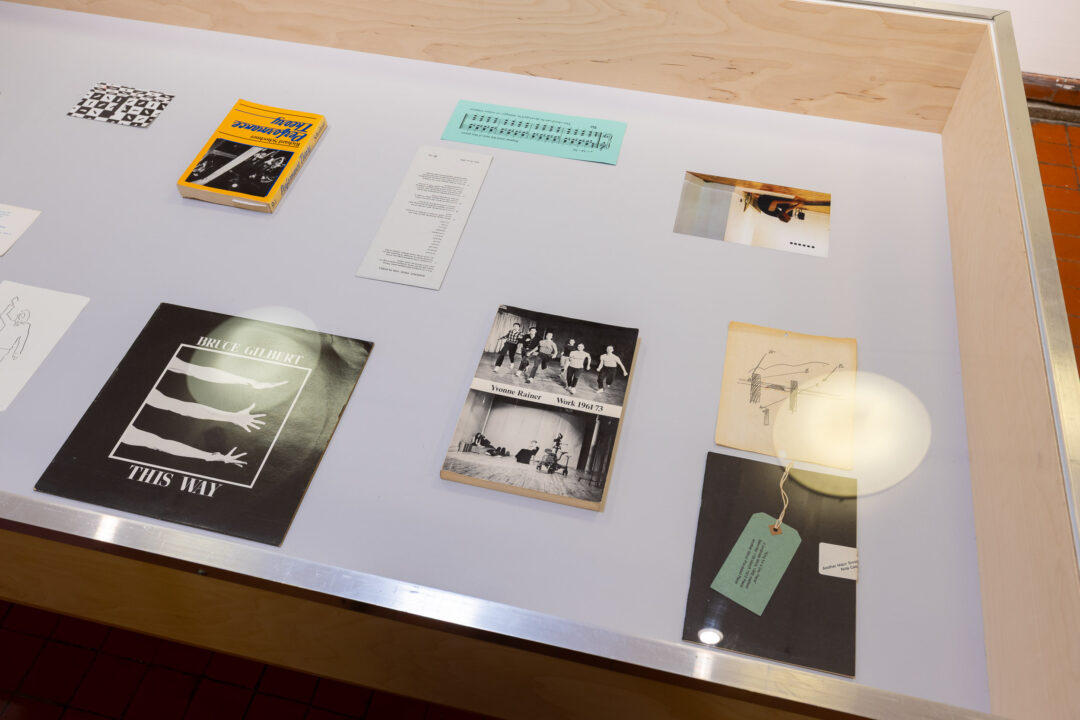
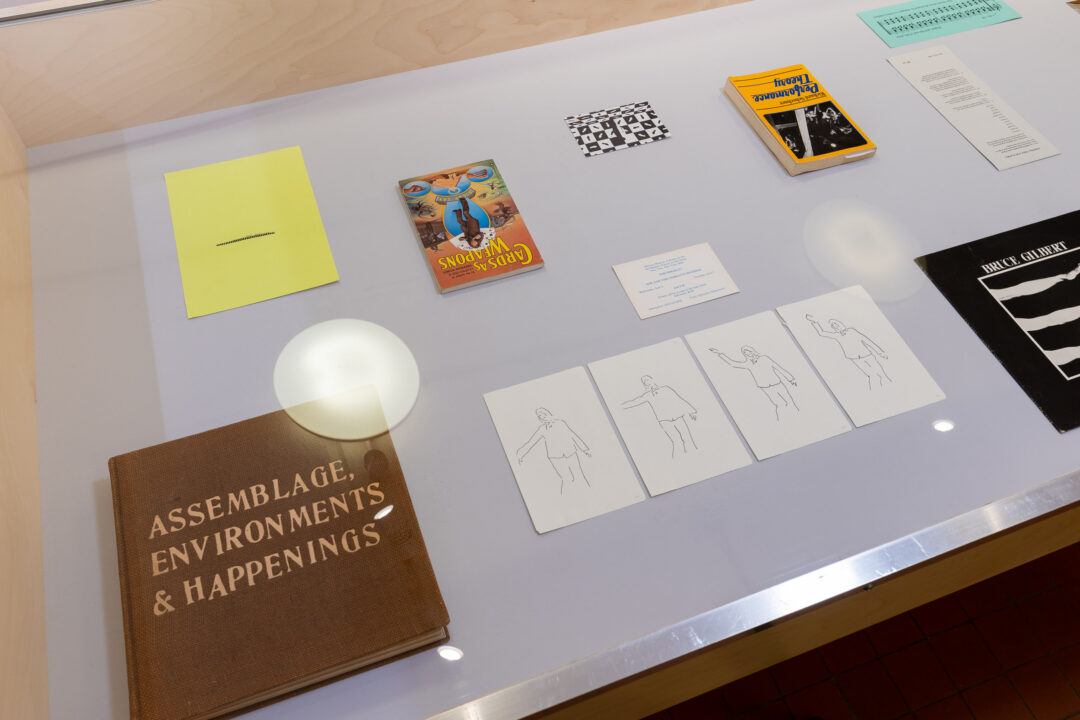
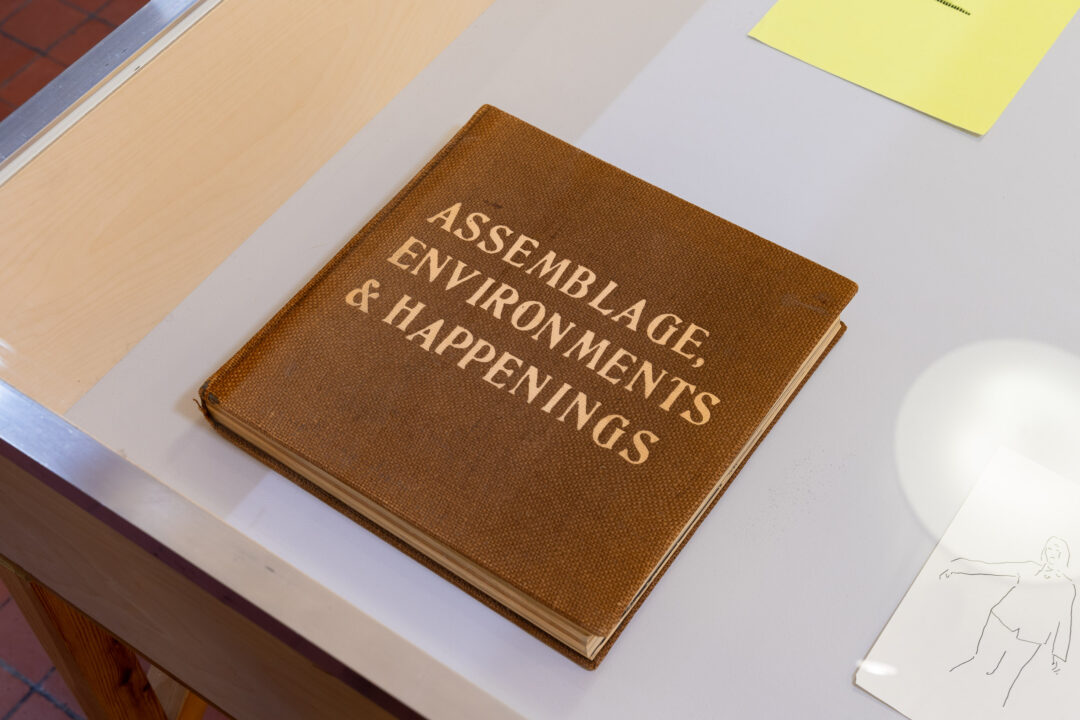
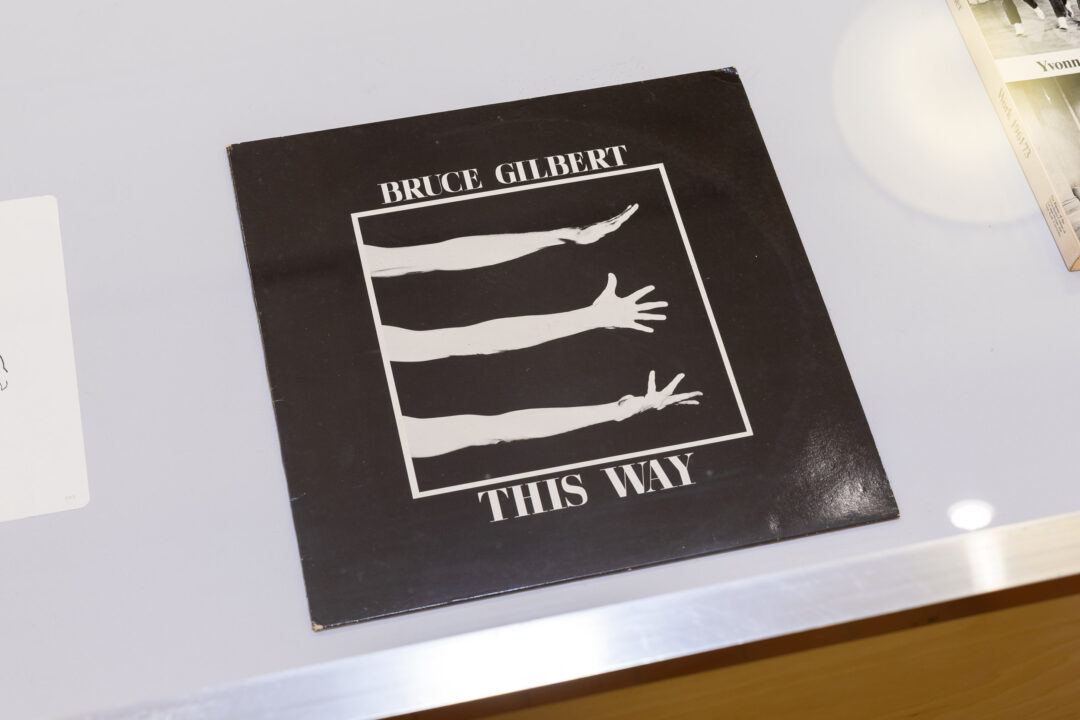
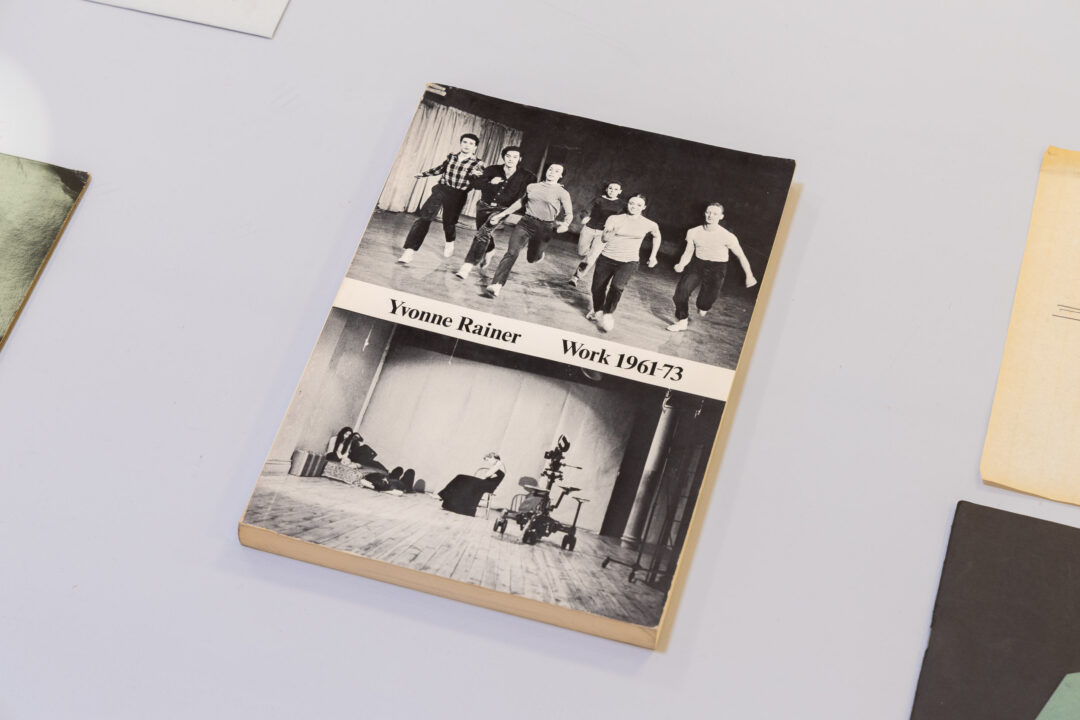
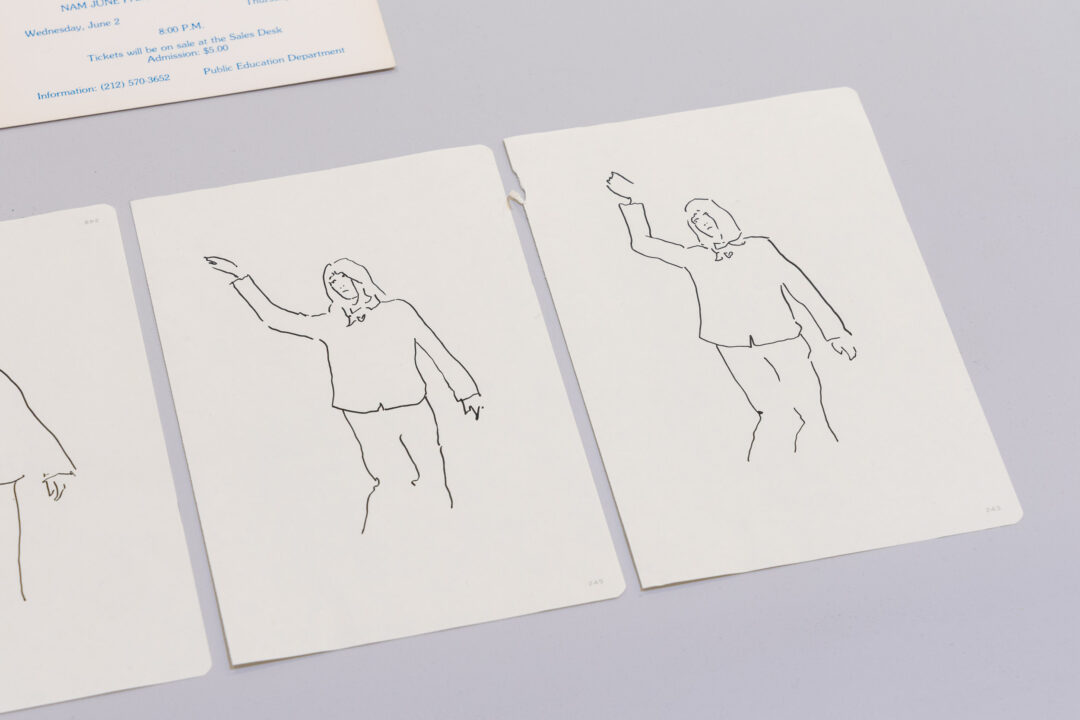
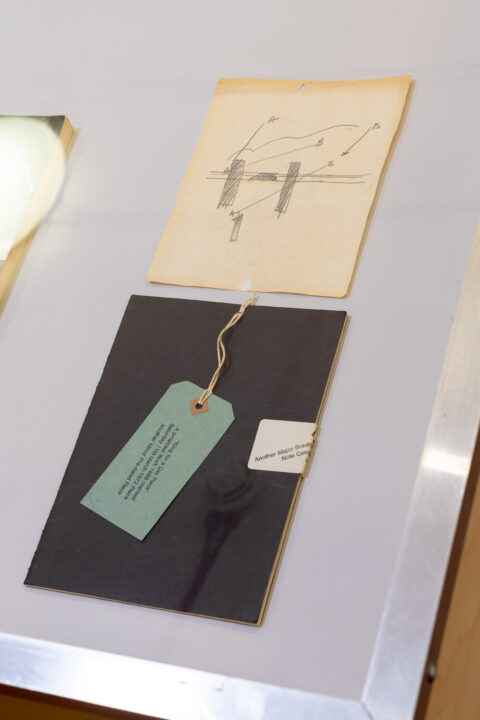
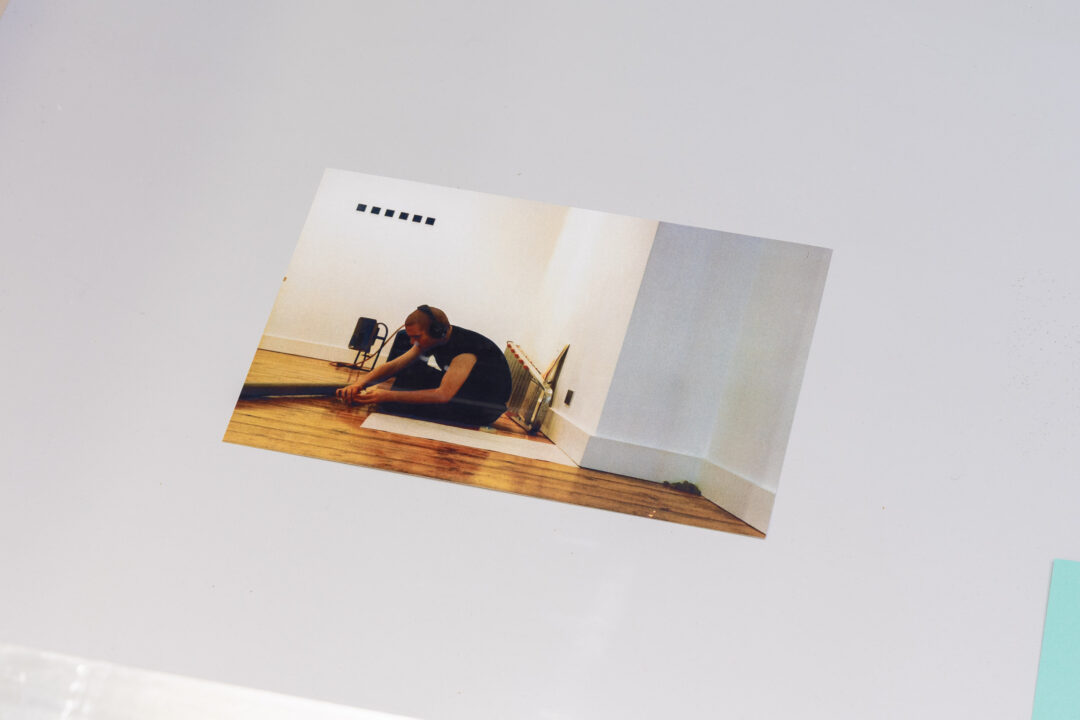
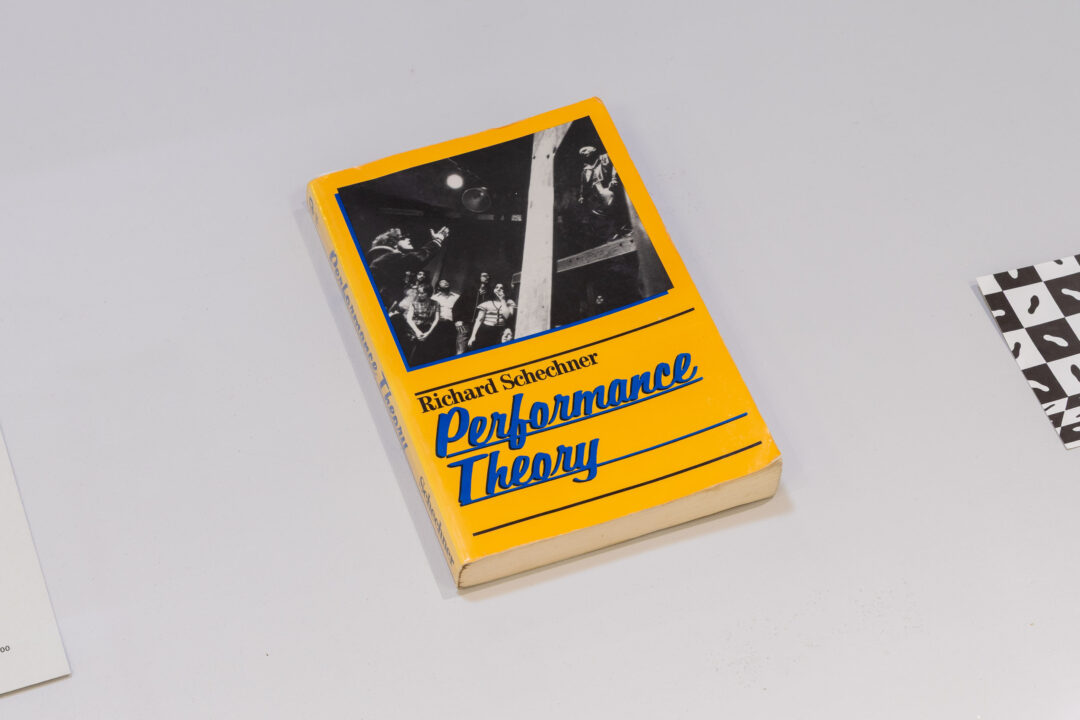
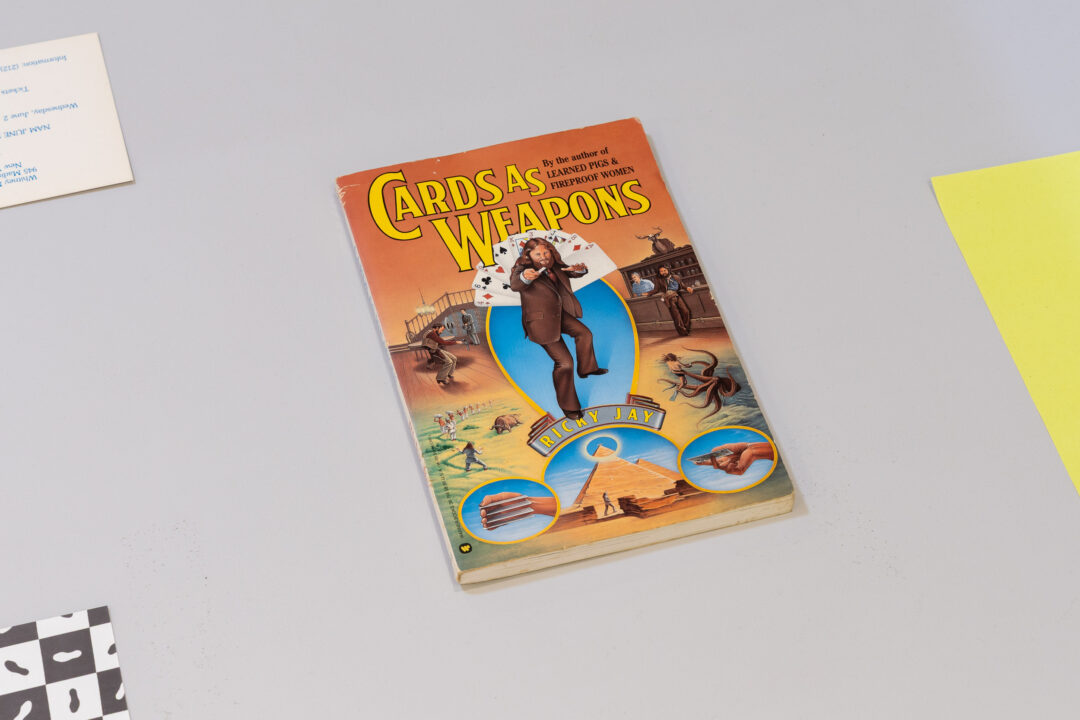
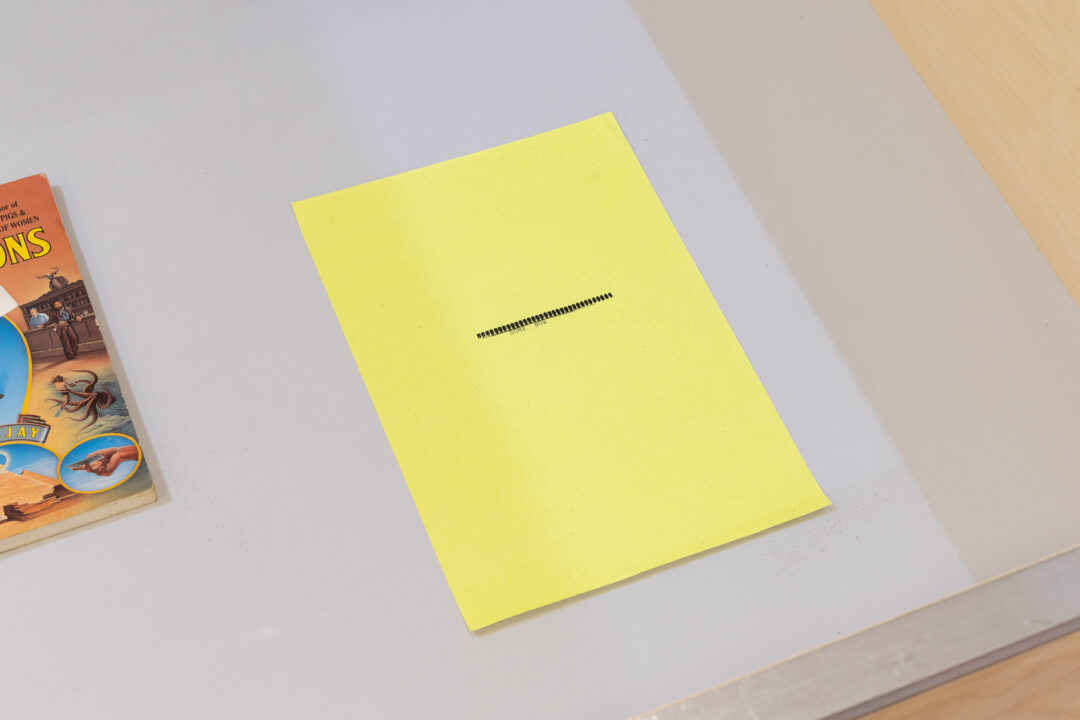
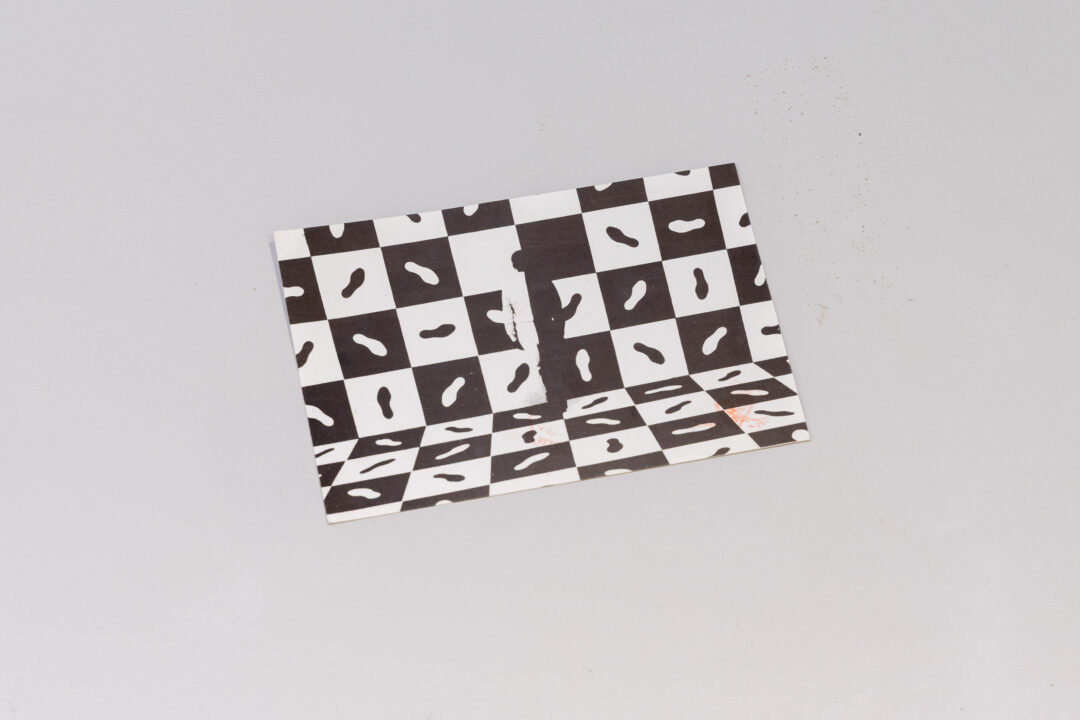
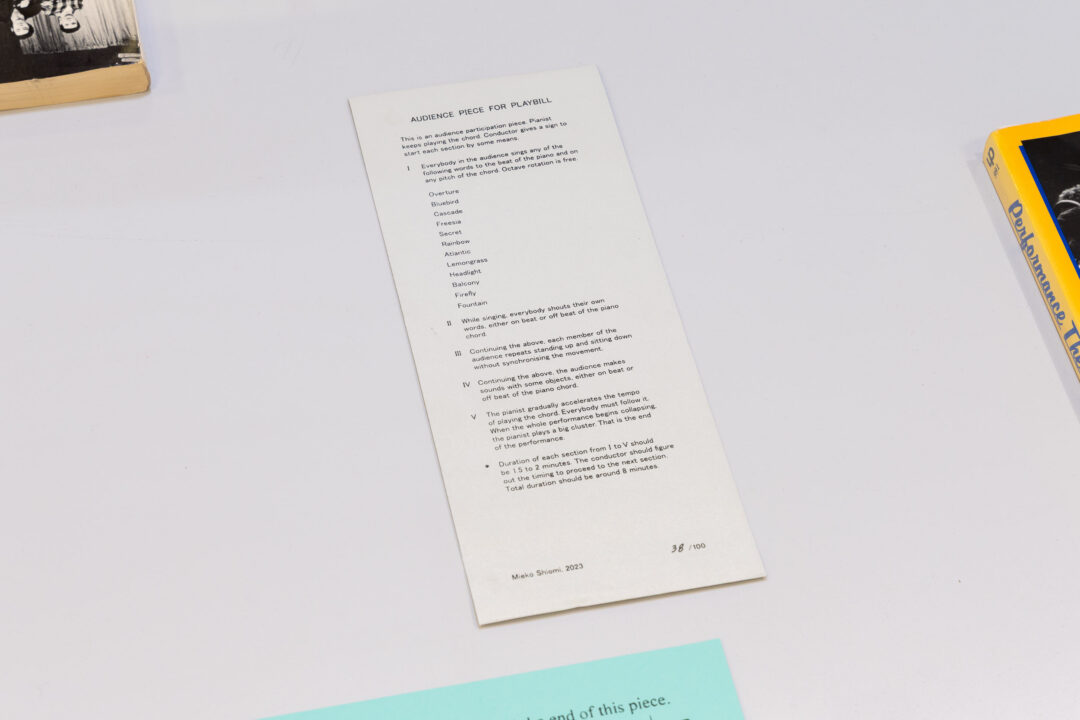
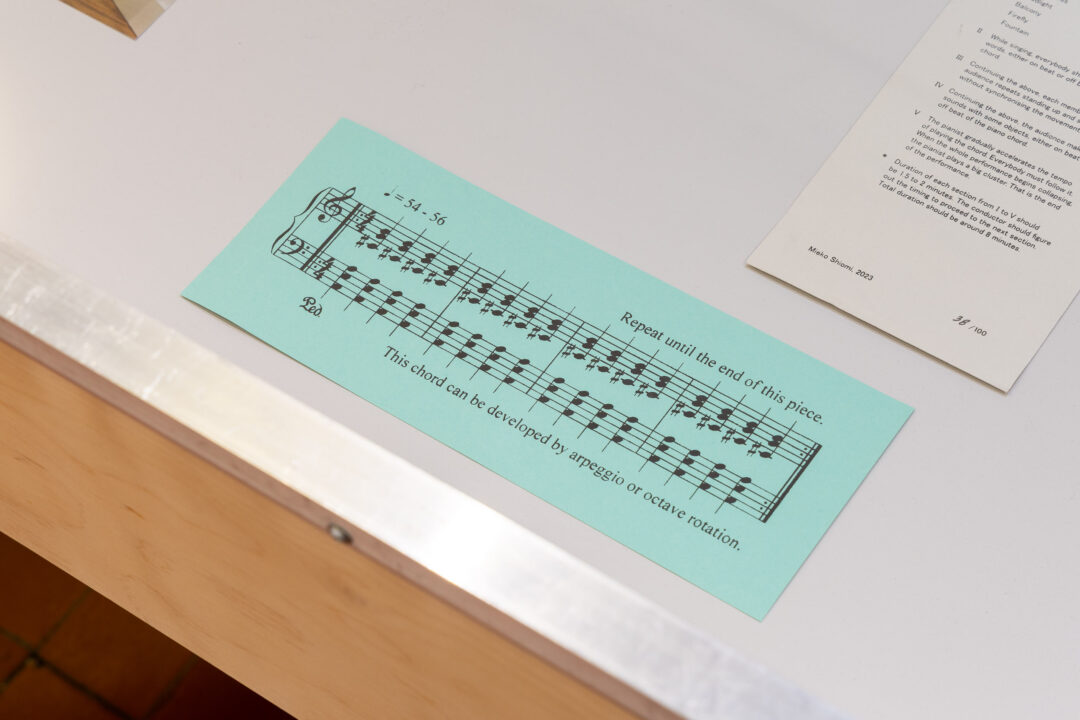
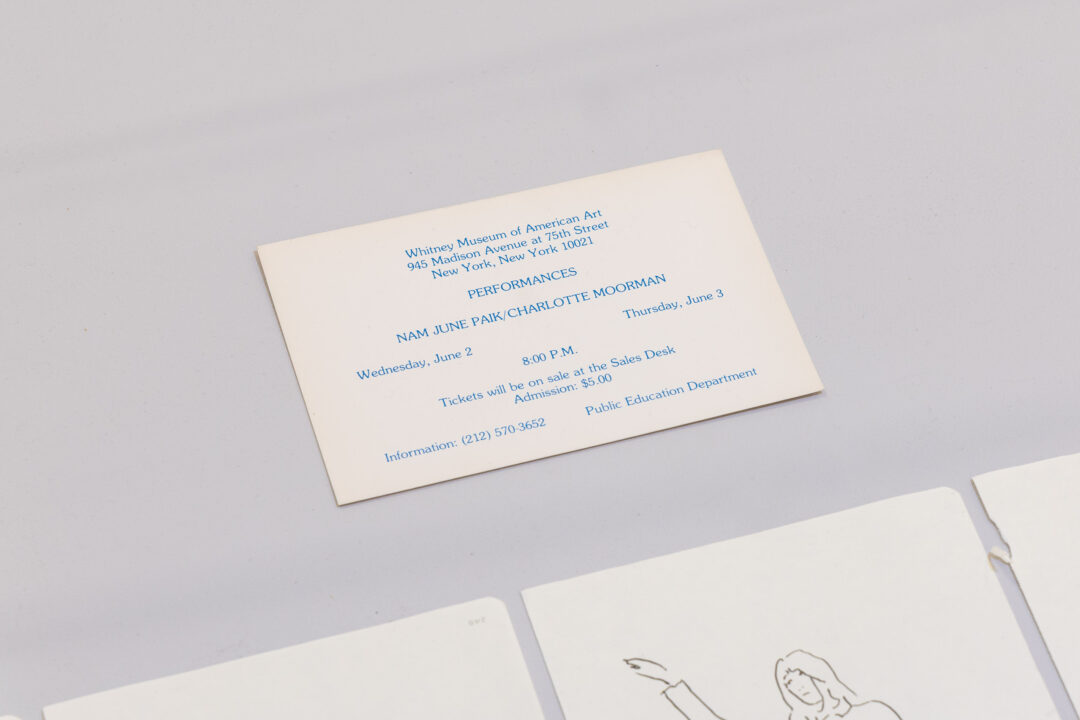
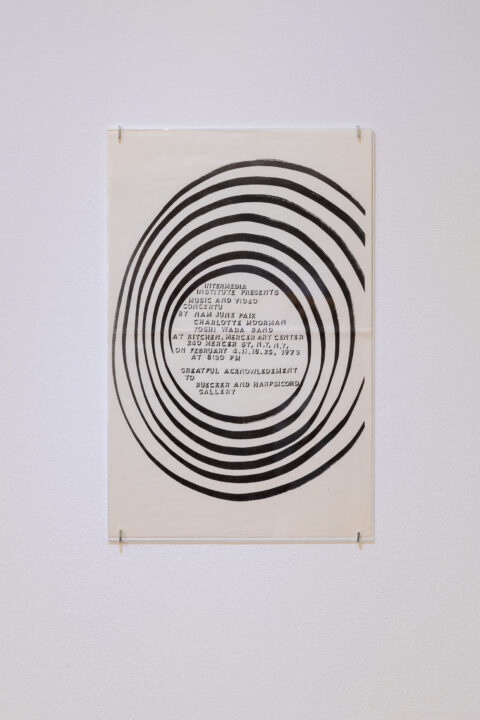
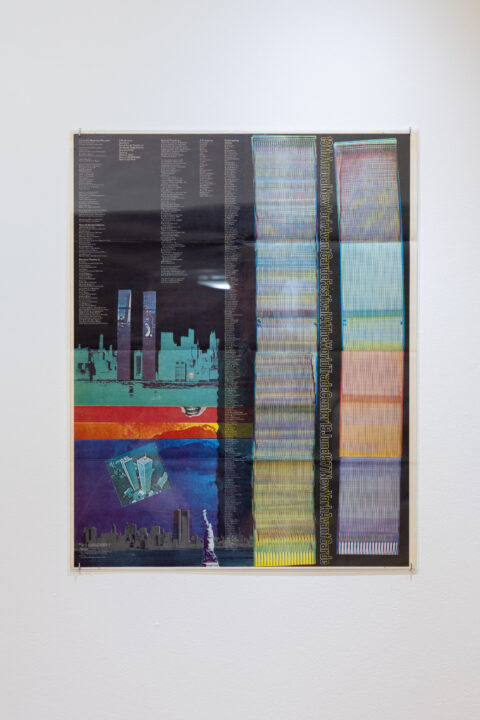
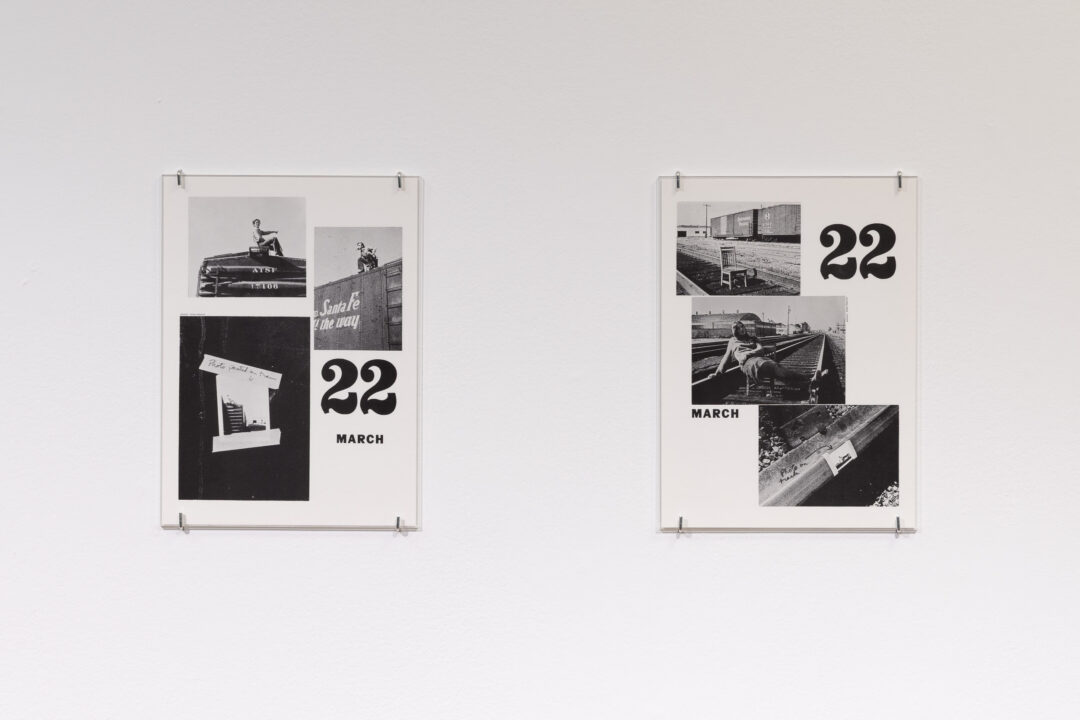
Image credit: Stuart Sherman, The Twelfth Spectacle (Language), photo by Nathaniel Tileston, 1980, as included in The Stuart Sherman Papers, 2025.
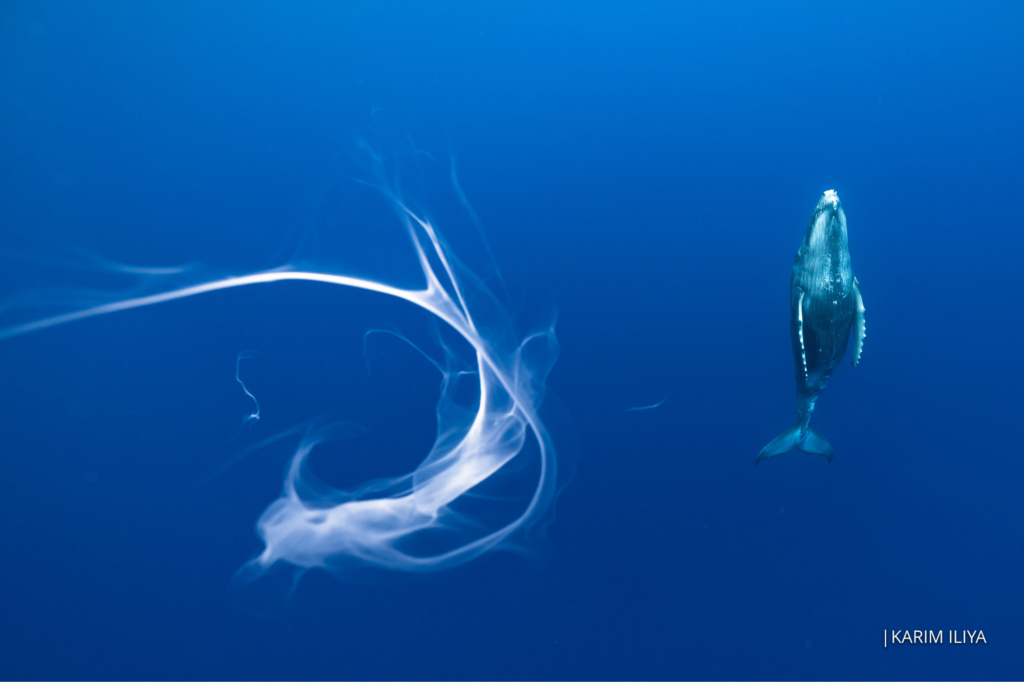
In this series of events, which are part of Jenni Ramone’s project on breastfeeding narratives and representations, Jenni is joined by photographer Karim Iliya, writer ‘Pemi Aguda, and nurse educator Meg Moorman. These conversation events invite us to think about how the arts and humanities can transform the way we practice and understand breastfeeding, health, and our interactions with other animals and the planet.
Join Karim Iliya discussing the hidden underwater worlds and other natural places he has portrayed in photography and films, with NTU’s Jenni Ramone.
Karim Iliya is a photographer, filmmaker, whale swimming guide, and former dearMoon crew member based in Iceland. He also co-founded Kogia, a nature conservation non-profit. Karim grew up in the Middle East and Asia and developed an insatiable curiosity for the natural world which has taken him into the midst of exploding volcanoes, battling whales, ice worlds of the Arctic, and many of the incredible places where humans and animals make their homes. Through his photography and films, Karim takes his audiences to hidden underwater worlds and documents other natural places in an effort to protect Earth’s delicate ecosystems. Karim has worked in over 50 countries, won multiple awards, and his work has been featured in numerous distinguished magazines, documentaries, and publications.
For more on Karim’s work, check out his website and for more of his photos follow this link to his Instagram.
Join fiction writer ‘Pemi Aguda reading from and discussing her recently published collection of short stories, Ghost Roots, with NTU’s Jenni Ramone.
‘Pemi Aguda is from Lagos, Nigeria. She has an MFA from the Helen Zell Writers’ Program at the University of Michigan. Her writing has been published in Granta, Zoetrope: All-Story, Ploughshares, and One Story, among others, and won O. Henry Prizes. Her novel-in-progress won the 2020 Deborah Rogers Foundation Writers Award, and she is the current Hortense Spillers Assistant Editor at Transition Magazine. Ghostroots, a finalist for the 2024 National Book Award in Fiction, is her first book.
For more information about Pemi’s work, please visit her website, webstore, and Instagram
Join nurse educator Meg Moorman discussing her project on using visual thinking strategies to enrich nursing education and patient care, and considering how the strategies might be applied to breastfeeding support, with NTU’s Jenni Ramone.
Meg Moorman is a pioneering nurse educator whose innovative integration of the arts into nursing education has significantly influenced the development of clinical judgment and holistic care practices. As a Clinical Associate Professor at Indiana University School of Nursing, she also serves as the Coordinator of the MSN in Nursing Education Program and directs the Faculty Innovating for Nursing Education (FINE) Research Center. Dr. Moorman’s contributions have been recognized nationally; in 2022, she was inducted as a Fellow into the National League for Nursing’s Academy of Nurse Educators, honouring her innovative approaches to nursing education. She has presented her research internationally and consulted with various universities and healthcare workers throughout the world. Her ongoing efforts continue to inspire educators to incorporate humanities-based methodologies, like visual thinking strategies (VTS), to enrich nursing curricula and ultimately enhance patient care outcomes. Through her research and practice, Dr. Moorman has demonstrated that VTS can foster a safe learning environment, encourage diverse perspectives, and improve medical professionals’ ability to interpret complex clinical situations. Her work has shown that engaging with art through VTS not only sharpens visual literacy but also cultivates empathy and reflective thinking among nursing students. She was recently accepted into the Harvard Macy’s Art- Museum-based Health Professions Education Fellowship.
Form more information about Meg’s work, please follow this link to their website, and a feature written about this project can be found here.
Bonington Gallery is delighted to host the culmination of this year’s CADALFEST (Celebrating Adivasi and Dalit Arts and Literature Festival).
After two successful festivals between 2022-24, at locations within the UK and India, this third instalment will culminate with a two-day programme of screenings, discussions, workshops and masterclasses at Bonington Gallery, offering audiences a closer, more sustained engagement with contributors than on previous occasions.
This new, more interactive format will allow audiences to work closely, and embark on a two-day journey, with the filmmaker Jayan K. Cherian, the writers and poets Gogu Shyamala and Jitendra Vasava, the writers and researchers Gopika Jadeja and Priteegandha Naik, as well as the Jangama Collective.
This year’s festival also celebrates the 10-year anniversary of the network on Dalit and Adivasi literature that was launched by the first conference on Dalit literature at Nottingham Trent University in June 2014.
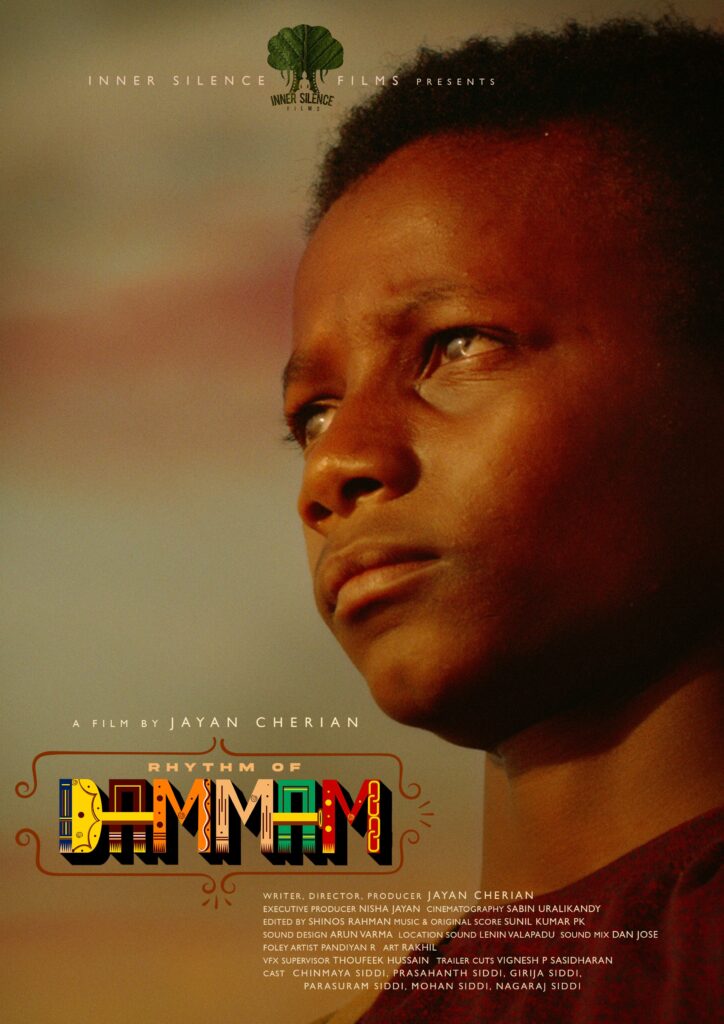
10 am – 12 pm: Gopika Jadeja and Jitendra Vasava, ‘Adivasi lives in forest, village, city’.
Jitendra Vasava and Gopika Jadeja have been working over the past decade to translate and publish Adivasi poetry from western India, including Vasava’s own poetry. Beginning with a song in celebration of the Earth, Vasava and Jadeja will weave through Vasava’s poetry in Dehwali Bhili and English translation, video footage of readings by other Adivasi poets and reflections on poetry, orality and Adivasi struggles.
1 – 3 pm: Screening of Rhythm of Dammam, a film by Jayan K. Cherian, followed by a discussion with the filmmaker.
In Uttara Kannada, India, Jayaram Siddi, a twelve-year-old boy, is believed to be possessed by the spirit of his late grandfather, Rama Bantu Siddi. Despite seeking help from local black magicians, Jayaram’s condition remains unchanged. He escapes into a dream world, using ‘magical’ instruments from his grandfather to connect with his ancestors. However, he becomes overwhelmed by the agonizing history of his ancestors’ chattel slavery, losing touch with reality. Jayaram drops out of school, and his family strives to restore his balance by embracing tribal rituals and Dammam music, both vital to their cultural heritage. The film delves into Jayaram’s struggle with intergenerational trauma, emphasizing the challenges faced by him and his family in finding healing and stability.
Rhythm of Dammam is a groundbreaking production that brings to light the little-known Siddi community of India, also known as the Sheedi or Habshi, who primarily reside in regions like Karnataka, Gujarat, and Hyderabad in Telangana. The Siddi people trace their ancestry to the Bantu people from Southeast Africa, who were enslaved by Portuguese traders and brought to the Indian subcontinent between 1530 and 1740. While slavery was declared illegal in British India by 1835 (and continued until 1865 in Portuguese-controlled Goa), the Siddi people endured a different form of bondage within India’s complex caste system after abolition.
Despite some progress in Indian society, the Siddi community continues to experience discrimination and marginalization, limiting their social and economic mobility due to their position within the caste hierarchy. Nevertheless, the Siddi people have shown remarkable resilience in preserving their unique cultural identity. They have achieved this by maintaining their ancestral customs while incorporating elements of Indian culture, particularly traditional Dammam music and tribal rituals. The journey of the Siddi people—from enslavement to current caste-based challenges—is a moving tale of determination and survival. It highlights the enduring impact of societal oppression while showcasing the strength of cultural heritage and community solidarity. The film Rhythm of Dammam offers a fresh perspective on the complex dynamics of caste, race, and identity in contemporary Indian society. It encourages viewers to question their preconceptions and biases while acknowledging the resilience of the human spirit in its pursuit of dignity and freedom.
3:30 – 5:30 pm: Masterclass with Jayan K. Cherian.
In this interactive masterclass, Jayan K. Cherian will focus on the logistics of independent filmmaking in a remote village setting—navigating limited infrastructure, working with non-professional actors, and building a creative process rooted in mutual trust. He will also share insights from his experience living and working with the Siddi community—how they prepared documentary subjects to step into fictional roles and developed the screenplay through oral histories, local legends, and the mythologies shared by elders. These became the foundation for a story that reflects the community’s collective memory, while also raising questions about who gets to represent whom, and how (the politics of representation in cinema).
10 am – 12:30 pm: Priteegandha Naik’s workshop ‘Reclaiming Tomorrows: Liberation through Dalit Futurism’.
This workshop aims to re-imagine and rewrite the intended telos of the caste system as envisioned by Vinayak Damodar Savarkar. It will employ speculative fiction to resist, challenge, and create anti-caste futures. The workshop uses Dalit futurism as a toolkit to build blueprints of tomorrows and bring them to life. It will use Dalit futurism to critique, dream, and create new narratives of hopeful and collaborative futures.
1:30 – 3:30 pm: Gogu Shyamala’s presentation ‘Pain resonates in speculative fiction’ and conversation with Priteegandha Naik, chaired by Basma Mahfoud-Vandermeersh.
In this presentation with poems, songs and stories, Gogu Shyamala will engage in a dialogue with the writings by Dalit women who unveil mundane lived and shared experiences of those who are located at the lowest strata of society and whose lives are coloured by divisions of class, caste and gender. The context of this intersectional oppression of Dalit women is a civil society that is fragmented by religion, while caste compartmentalises India into 3000 fragments and about 25,000 subdivisions. Unlike religion, the division among castes is invisible but firmly in place. This systematic division, called the ‘Caste System’, is premised on codification of the five-fold varna system. This codification subscribes to an ideology of divisions in a hierarchy akin to a vertical ladder, naturalising and internalising the idea of purity and pollution of castes by religion, effecting untouchability and inhumanity. All top four varnas thereby humiliate the last varna in terms of the economy, ethnicity, culture and assertion.
Gogu Shyamala will discuss how the form of speculative fiction is well suited to explore all these caste contradictions and dichotomies in order to create anti-caste literature and the history of contemporary conditions. She will draw on poems and songs as well as her recently published short story, “The Phantom Ladder” (in translation from Telugu by Divya Kalavala), in The Blaft Book of Anti-Caste SF by BLAFT Publications.
4 – 6 pm: Jangama Collective, represented by Lakshmana K P and Mohit Kaycee, screening of the play DaklaKatha DeviKavya, followed by a discussion with Lakshmana K P and Mohit Kaycee.
Daklakatha Devikavya is an experimental play drawing on the epic poetry and stories of the important Kannada writer and founder-member of the Dalit Sangharsha Samiti, K.B. Siddaiah. This experimental piece begins with a re- reading of a cosmogonic myth from a community that is oppressed even amongst the oppressed narrating the origins of the world and of life on it. The play progresses through weaving and unravelling untouchable rituals, beliefs, hunger and desires through song and storytelling. For untouchable communities nudi (speech, sound, voice, and word) is like breath that cannot be separated from the body. The play uses instruments such as the areye and tamte as vines of nudi that enmesh the narrative and sprout new directions from within. Thereby opening up the untouchable world as a world of deep sonic imprints. In a context such as this, the play confronts what happens when the ‘written word’ that has so far been unreachable collides with and becomes an organ of the untouchable body, giving rise to a new relationship of intimacy and struggle. The play provokes an exploration of how the received insights through the experience of untouchability and the ‘written word’ force us to confront what it means to be human in the depths of our being.
Jayan Cherian, from Kerala, holds an MFA in filmmaking from The City College of New York as well as a BA in film and creative writing from Hunter College. He has received numerous honours and recognition for his cinematic works, which have been featured at prestigious film festivals around the world, including the Berlin International Film Festival, Durban International Film Festival, BFI London Lesbian Gay Film Festival, NARA International Film Festival, Rio-de-Janeiro International Film Festival, Kolkata International Film Festival, and Montreal World Film Festival. His career features notable titles including Ka Bodyscapes (2016), Papilio Buddha (2014), The Shape of the Shapeless (2010), and the latest Rhythm of Dammam (2024). He has also contributed significantly to numerous documentaries and short films over the course of his career.
Basma Mahfoud-Vandermeersch is an ESL teacher based in Paris and pursuing a PhD at Université de Montpellier Paul-Valéry (France) in co-supervision with BITS Pilani Goa (India). Her research focuses on the production and reception of translated Dalit writings by women from South India and the diaspora. While looking at the articulation of caste in migration, she is also interested in exploring the possibilities of transnational collaboration, dialogue, and creation between marginalized communities (Dalits x Blacks x Queers x Muslims x Adivasis).
Dr Gopika Jadeja is a bilingual poet and translator and writing in English and Gujarati, active both in her native India and internationally. As part of a broadly engaged creative, scholarly and pedagogical practice, Gopika is Editor-at-Large (Singapore) for Wasafiri: International Contemporary Writing and Coordinating Editor of the journal PR&TA: Practice, Research and Tangential Activities—a peer-reviewed journal of creative practice with a focus on SE Asia based in Singapore. Besides this, she publishes and edits a print journal and a series of pamphlets that are part of a performance-publishing project called ‘Five Issues’. A recipient of the inaugural PEN Presents Award (South Asia) and the Charles Wallace Scholarship for Creative Writing, Gopika’s poetry and translations have been published in Modern Poetry in Translation, Asymptote, Cha: An Asian Literary Journal, Wasafiri, Cordite Poetry Review, Indian Literature, Sahcharya, Vahi, etc. Her work has also appeared in anthologies like The Art and Craft of Asian Stories: A Writer’s Guide and Anthology, A Thousand Cranes for India: Reclaiming Plurality Amid Hatred, No News: 90 Poets Reflect on a Unique BBC Newscast, The Blaft Book of Anti-Caste SF, etc. Gopika is currently working on a project of English translations of poetry from Gujarat, including Dalit and Adivasi poetry as well as a monograph based on her doctoral research. Her collection of poetry, What Parvati Does Not Say is forthcoming from Red River Press, India.
Judith Misrahi-Barak is Professor in Postcolonial Studies at the English Department, Université de Montpellier Paul-Valéry, France. She is a member of the research centre EMMA, and her areas of specialisation and publication are Anglophone Caribbean, Indo- and Sino-Caribbean literatures, diaspora and migrant writing, and Dalit literatures. Her monograph in French is entitled Entre Atlantique et océan Indien : les voix de la Caraïbe anglophone (Classiques Garnier, 2021). She is Co-Investigator on the AHRC-funded Research Network Series ‘Writing, Analysing, Translating Dalit Literature’ and its Follow-on Grant ‘On Page and on Stage: Celebrating Dalit and Adivasi Literatures and Performing Arts’. She is also General Editor of the series PoCoPages (Pulm, Montpellier) and she has co-edited special issues for The Journal of Commonwealth Literature (‘Dalit Literature’, 2019) and for Interventions: International Journal of Postcolonial Studies (‘Thanatic Ethics’, 2023). Among the volumes she has co-edited are the recent Kala Pani Crossings: Revisiting 19th century Migrations from India’s Perspective (Routledge, 2021), Kala Pani Crossings, Gender and Diaspora: Indian Perspectives (Routledge, 2023) and The Routledge Companion to Caste and Cinema in India (Routledge, 2023).
Shohini Barman is a Doctoral Candidate at the School of Arts and Humanities at Nottingham Trent University. She completed her Undergraduate and Master’s degrees in English from Jadavpur University (Kolkata, India). Her current research is on Dalit Literature in Bengal.
Mrigakshi Das is a Ph.D. candidate in English Literature at Nottingham Trent University, UK. Her research focuses on the assertion of Adivasi identity in Adivasi literature and cinema, with broader interests in Adivasi and Indigenous studies. She holds a Bachelor’s and a Master’s degree in English from the University of Delhi, India.
Dr Priteegandha Naik is an Assistant Professor at the Mukesh Patel School of Technology Management & Engineering, NMIMS University, where she teaches Communication Skills and other Humanities-centric courses. She is interested in exploring caste and gender in Indian Science Fiction. In particular, she has worked on Dalit Futurism and on understanding Dalit futures in speculative fiction, art, literature, and film and their consequent relevance to the anti-caste movement.
Dr Gogu Shyamala is one of the foremost contemporary Dalit writers in India, as an award-winning author, researcher, editor, and biographer writing in Telugu. Her collection of short stories Father may be an elephant and mother only a small basket, but… in English translation is a landmark in Indian literature, and her most recent publication is the short story ‘The Phantom Ladder’ (in translation from Telugu by Divya Kalavala), in The Blaft Book of Anti-Caste SF. Among her publications are anthologies of Dalit women’s writings in Telugu, and the biography of the first Dalit woman legislator, T.N. Sadalakshmi in the former state of Andhra Pradesh, India. She is the co-editor of the Oxford Anthology of Telugu Dalit Writing in English (OUP). She holds a PhD in the area of Dalit Women Biographies, Gender and Caste in Telangana, from the English and Foreign Languages University, Hyderabad. She studies Dalit women’s literature and the history and mythology of Dalit literature as well as collecting palm leaf manuscripts of Dalit Puranas for contemporary scholarly studies.
Dr Nicole Thiara is Senior Lecturer in English at Nottingham Trent University, UK, and Co-Lead of the Postcolonial and Global Studies Research Group as well as Principal Investigator on the AHRC-funded Research Network Series ‘Writing, Analysing, Translating Dalit Literature’ (2014-16) and its Follow-on Grant ‘On Page and on Stage: Celebrating Dalit and Adivasi Literatures and Performing Arts’ (2020-23). She teaches postcolonial and contemporary literature, and her area of research is Dalit, Adivasi and diasporic South Asian literature; her current research project is on the representation of modernity in Dalit literature. Her recent publications include ‘The Caste of Nature: Wholesome Bodies and Parasites in Bimal Roy’s Sujata and Gogu Shyamala’s “A Beauteous Light”, The Routledge Companion to Caste and Cinema in India, ed. by Judith Misrahi-Barak and Joshil K. Abraham (Routledge, 2023) and, with Judith Misrahi-Barak and K. Satyanarayana, the critical volume Dalit Text: Aesthetics and Politics Re-imagined (Routledge, 2019) and the special issue on Dalit Literature in the Journal of Commonwealth Literature 54 (1), March 2019.
Dr Jitendra Vasava is a poet from Mahupada village Narmada district of Gujarat, who writes in Dehwali Bhili, Hindi and Gujarati. He is the founding president of Adivasi Sahitya Academy and edits Lakhara, a magazine dedicated to Adivasi voices. Following his doctoral research on the cultural and mythological aspects of Dehwali Bhili oral narratives he is doing research on the environmental knowledge systems of the Bhils as a post-doctoral fellow at the Indian Institute of Technology, Gandhinagar. He has published five books on Adivasi oral literature, an anthology of Adivasi poetry from Gujarat and a book of poetry.
Jangama Collective is a Bangalore-based group of theatre artists with diverse cultural backgrounds who believe in creating cultural and political awareness choosing theatre as their way of expression. As an extension of this, the group has engaged itself in creative processes like education, literature, publishing, cinema and social struggles.
Lakshmana K P, founder member of Jangama Collective is an actor, director, poet, and performance educator from Karnataka, India. He graduated from the Intercultural Theatre Institute Singapore in 2018 and from Ninasam Theatre Institute in 2012. Lakshman has been exploring questions around Dalit aesthetics in performance, and his two recent plays We the People of India and Daklakatha Devikavya explore intersecting questions about Dalit political modernity and cultural memory.
Santosh Dindaguru is from Dindaguru of Channarayapattana-taluk-Karnataka. He holds a diploma from Ninasam and a master’s degree in Drama. He was inspired by Babasaheb Ambedkar’s thoughts and has persistently tried to bring awareness about caste discrimination and its impact on the society through poems, stories and plays. He is the founder of “Neladani”, an organization in his village-Dindaguru. Santosh is a recipient of DeccanHerald ChangeMaker-Award in 2023. Currently he is working as a theatre teacher in Poorna Learning Center in Bangalore.
Bharath Dingri is from Ashapura, Raichur District-Karnataka. He was introduced to the Songs of Resistance at a very young age by his father who is a street play artist and grew up traveling to different villages and regions and played the Tamate along with his father during performances. Having worked in well-known repertories in Karnataka, he did his Diploma from Ninasam. He also has a Diploma in Journalism.
Bindu Raxidi is from Raxidi of Sakaleshapura-taluk-Karnataka who grew up as a child artist. She completed her BBM. Later she worked in BPO agency in Mangalore. She holds a Diploma from Ninasam Theatre Institute and went on to be a part of Ninasam-Tirugaata Repertory for three years. She founded a theatre team called “Act-React” in Bangalore. She has established herself as an actress in Kannada and Tulu Cinema Industry and in Kannada theatre.
Ramika Chaithra is from Bangalore, Karnataka who has been doing theatre for the past 8 years. She completed her theatre course from Banna Abhinaya Rangashaale and attended various theatre workshops in Bangalore. She has acted in various theatre groups and also went on to act in TV serials and Cinema. After completing her B.Com., she has taken up acting and modelling as her profession.
Narasimharaju B K originating from Bevinahalli Sira, Karnataka, Narasimharaju’s expertise lies in playing the areye (urume). He comes from a lineage of areye players, having started when he was 6 years old. He commonly performs in festivals and ceremonies, and he has performed the areye in a contemporary performance setting in Singapore for a dance piece ’Yahi’. He also holds a master’s degree in Kannada literature and a bachelor’s in Education.
Shwetha Rani HK is a theatre practitioner from Hassan, working in theatre for the past 11 Years. She holds a Diploma in theatre by Ninasam and the National School of Drama, New Delhi, specialization in acting. She worked as an actress and technician in Ninasam, Shivsanchara and Janamanadaata Reportry Companies. She taught in Ninasam for two years. Currently, she is teaching and also the Principal of Sri Shivakumara Rangaprayoga Shaale, Sanehalli.
Poorvi Kalyani is a singer, composer and actor who grew up in the presence of theatre from a very young age as her parents are from Professional modern Theatre. Formally trained in theatre music by her mother, she later on practiced Hindustani and Carnatic Classical music. She is also a dancer who is trained in Bharatanatyam. Along with being an artist, she has also chosen a career in Finance and has a working experience in GST and is currently pursuing her law degree.
Mohit Kaycee is a Ph.D. Candidate in the Anthropology of Religion at Columbia University. Previously he worked at India Foundation for the Arts (IFA) and the Centre for the Study of Social Exclusion and Inclusive Policy (CSSEIP) at National Law School (NLSIU), Bangalore. Since 2012 Mohit has been closely associated with Kotiganahalli Ramaiah and his work in pedagogy and performance at Terahalli Hill in Kolar. He has also worked on documenting ritual cultures, oral-performative practices, and textual collections of marginal communities across Karnataka.
Skanda Ghate is from Bangalore. He began his theatre journey from a very young age and has been consistently working in Kannada Theatre since then. After completing his engineering degree, he decided to take up theatre as a profession and finished his diploma in theatre arts from Ninasam. Currently he is a member of Jangama Collective and has been a part of various plays and productions in different capacities.
Sriharsha G N is a Bangalore based theatre artist. Software Engineer by profession, he has worked in several theatre productions in Kannada, English and Hindi languages. He is currently a volunteer at Jangama Collective and Artists Conservatory.
Manju Narayan has been a Bangalore based freelance theatre practitioner in the lighting department for the past 15 years. He has been working with different genres such as classical and contemporary dance, ramp walk, and puppetry, predominantly in Kannada plays. Manju Narayan also holds PG in English from Bangalore University, a Diploma in theatre, a Diploma in Ambedkar studies, and a Diploma in Gandhi studies from the same University.
Sachin Ranganath is a Bangalore based theatre light designer. Civil Engineer by profession, he has worked in several theatre productions in Kannada.
Manoj Kumar K. is from Channarayapatna of Hassan district. From his schooling days, he learned Yaskshagana and performed in many plays across Dakshina Kannada. Along with his Bachelor’s, he has got a Diploma in Theatre arts from SDM College, Ujire. He is a Banker by profession. His major theatre plays are – A Mid-Summer Night’s dream, Maduve Hennu, Shashtravyuahagalu, Ooru-Keri, Krishna Sandhana, We the people of India.
Chandra Shekhara K, founder member of Jangama Collective, is an Actor, Director, Musician and teacher from Karnataka, India. He graduated from Ninasam theatre institute Karnataka and he has a Master’s Degree in performing arts from Bangalore University. He has been traveling across the world performing. He has performed in many national and international theatre festivals in India and abroad.
Image at top of page: Film still from Rhythm of Dammam (2024), directed by Jayan K. Cherian.
As a legacy to our Art Schools of the East Midlands exhibition by John Beck & Matthew Cornford in Sept/Dec 2023, we invited Stella Couloutbanis who was Exhibition Organiser (later Exhibitions, Events and Festival Director) at Bonington Gallery between 1989 and 2007 to jot down memories of her time at Bonington Gallery & NTU.
This piece of writing is also shared on the occasion of our current Bonington Archive display entitled Stella’s Dilemma, that documents some of the process behind the creation of Tom Hackett’s 1991 solo exhibition Burst. This presentation is on show in the foyer of Bonington Gallery from 16 March – 4 May, 2024.
Memories of Bonington Gallery by Stella Couloutbanis
“In April 1989 I joined Trent Polytechnic as an Exhibitions Organiser for the Bonington Gallery, having left my previous role as Touring Exhibitions Officer within the Arts Division of Nottinghamshire County Council (NCC).
It was an interesting time to join the Polytechnic. Local authorities had relinquished responsibility and Trent Polytechnic was moved away from NCC – two years later becoming an independent university, first called Trent University and later changed to its current name, Nottingham Trent University. With its new statute a Vice Chancellor (VC) was appointed, Professor Ray Cowell. He had a passion for the arts and played a pivotal role in developing the art culture within the university.

The strategy was to transform the space into a public contemporary art gallery. The early years presented some significant challenges, with no designated office area, no staff, a limited budget, limited technical support, no funds to publicise the space, no doors to the gallery, no easy access, and no invigilation.
I initially shared an office within proximity to Professor Robert Ayres, Head of Visual Arts and Fine Art Department, who was my manager and led the vision for the space and the city.
Up to this point the gallery was referred to as ‘The Exhibition Hall’. It had an outline exhibition programme established by external bookings and by members of the Fine Art staff.
To reposition the gallery as a contemporary public gallery we needed to shift away from external bookings and use by internal staff towards a more public remit. Like any change it was initially tricky to implement, but after two years the switch was well underway. The gallery had been renamed to ‘The Bonington Gallery’ (later shortened to just ‘Bonington Gallery’), and a programme of contemporary artworks and performances was being programmed for up to two years ahead.

In the early 1990’s we successfully secured two significant grants which helped elevate the Gallery and establish its position as a public art gallery. We became clients from East Midlands Arts (now the Arts Council England) receiving an annual grant plus match funding from Trent Polytechnic.
The Henry Moore Foundation awarded us a grant to upgrade the gallery, allowing us to procure and fit doors, install a disabled access lift, install bannisters on the staircase, procure and install theatre lights and completely renovate the wooden floor.
We also managed to get a disabled toilet installed in the Bonington building with a grant from Nottinghamshire County Council.
The most amazing thing for me about the Bonington Gallery was its size. It was one of the largest, single room galleries in the Midlands with a ceiling height of 22 feet and 2153 square feet of flooring. It had a beautiful maple floor which was in stark contrast with its brutal concrete egg box ceiling – all these distinguishing features making the gallery iconic, in my opinion. I would often describe the space to artists as a space you walked down into and, “imagine you are at the bottom of an empty public swimming bath”. The vastness of the space also meant the acoustics were difficult to work with making public speaking sometimes a challenge.

Forming partnerships and collaborations with artists and art organisations was pivotal in the gallery’s development and helped create a robust programme. Over the 18 years the team worked with all the key organisations and festivals in Nottinghamshire, such as Dance 4, Now, Expo, Angel Row Gallery, Nottingham Castle Museum & Art Gallery, Djanogly Art Gallery, Wollaton Hall… and many more. Hosting some of the best talent in the arts.
I worked with some amazing artists and performers during my time, too many to count, who were based locally, regionally, nationally and internationally – I never did a head-count, but it must be over a thousand. One of our key success factors was our growing reputation for supporting artists where we would do all that was possible for them to produce their creative work. Mentoring was very important to me, to help artists develop their artistic ideas. We were always being flexible, understanding that work was fluid and the creative outcome could be very different to what was originally proposed.

Bonington Gallery was always a space for site specific and installation work. In 1991 John Newling installed his work, Lost. It covered the entire floor of the gallery with a map of Nottingham City Centre made from paracetamol laid on steel plates. It was a significant point for me – not only was the work powerful and thought provoking with a striking visual impact, it showed that the gallery was ideally positioned to commission site specific works for the space and not just hosting and housing wall and floor-based work.
Over the years we had some fantastic installations; David Wilkinson & Mary McIntyre, Ray Lee, Dunn & Dempster, Shelley Sacks, Ansuman Biswas (collaboration with NOW Ninety 9), Rosie Leverton, Tom Hackett, Lorna Green, Natasha Kidd, Lone Twins, Gobb Squad, Opera North, Bodies in Flight, Hancock and Kelly, Ivan Smith, Susie MacMurray, Mariele Neudecker, Richard Brown are just a few to name.

Dance was a significant aspect of our programme, and we held the first Dance Festival in 1991, organised by Nottinghamshire County Council. At this festival I was introduced to the company Salamanda Tandem. This was the beginning of a very long working relationship between us, lasting several decades. Isabel Jones, the director (a dancer, singer, musician and visual artist) worked in Bonington Gallery for many years and I became chair to the company in 2005.

The gallery was a host and collaborator for Notts Dance and Body Shape Image – two major dance festivals organised by Dance 4. We worked with Expo and Now (Nottingham City Council) presenting, co-commissioning and supporting performances.

Around this time the VC’s passion for the arts led to the establishment of a collection of artworks for the university, focusing on purchasing works from practitioners living and working in the East Midlands. Bonington Gallery was responsible for sourcing, hanging, caring and cataloguing the works.
With an increase in our Arts Council grant, Future Factory was created by Professor Rober Ayers who was appointed as the first Artistic Director ever established at a university. This funding allowed us to commission new work and host our own performance festivals, Celebration Nottingham, Sensitive Skin and Body Space Image. We also ran artist fellowships – giving support, mentoring, opportunities and bursaries to help further their practice. Future Factory’s exhibition and performance programme was housed at Bonington Gallery and Powerhouse, Victoria studios (the site for the new DaDA building). This included a multi-disciplinary contemporary exhibition programme involving photography, film, video, sound and multi-media plus a live art and performance season every year.
When Future Factory was established, Bonington Gallery had a team of eight, including a marketing officer, marketing assistant, technician, education officers, the director and myself. This was an amazing time as it was the start of a feasibility study for a new contemporary art and performance space in Nottingham which was awarded to Nottingham Trent University. The outcome was a success, which led to a further award from Arts Council England to continue with a more thorough and detailed feasibility study working in collaboration with Nottingham City Council and University of Nottingham.

In 2003, due to staff changes, I was promoted to Exhibitions, Events and Festival Director to programme and curate exhibitions, performances and events in Bonington Gallery and 1851 Galleries (Waverley Building), Powerhouse/Basement performance spaces and other University venues. In 2004 I was seconded part time to Nottingham Contemporary as a member of the development team, attending project and client team meetings, stakeholder/sub board meetings and Capital Network meetings.
I have so many happy memories at Bonington Gallery… In the 1990s it was one of the locations for the TV series Boon. We had students exhibiting work in the gallery, including Sue Webster and Tim Noble and we negotiated a fee of £50 per student and a fee for the gallery. In addition, we were allowed to use the catering wagon which was stationed outside the gallery. It took a week for the crew and actors to film a 1-minute-long scene which was a confrontation of a student and a lecturer with a slap on the face!



Having Tom Hackett’s Burst sculpture installation at the Gallery included sourcing, transporting and installing 70 industrial scale cable reels. I cannot remember how we got them in but I do remember the very long chats with the health and safety staff. The Gallery, over the years, has housed many other installations made from a wide variety of materials including bricks, books, fabrics, banana skins, radiators, and performances featuring bodily fluids, duration, audience participation and dancers performing with paintings and other media.


On one occasion an external booking for a flower show had been taken that I was not aware of which clashed with a show I booked in – we had to temporarily take the show down for the weekend to allow the flower show and then rehang it again (not to be recommended!).
We held a Guinness World Record Breaking event. Matt Hand in collaboration with Leif Alexis and Ben Mawson-Harris broke the world record for the longest table tennis rally on their 16th attempt over a 24-hour period, reaching 5 hours, 8 minutes and 22 seconds.

I worked with many students and graduates showing their work in the numerous associated spaces; from gourmet meals being cooked and served by two creative arts students in the Bonington Foyer, to tomato throwing in the gallery, to exhibitions, to awards (Margaret Bryan and Geoff Ball awards) and Expo which was started by NTU graduates.
In 18 years at Bonington Gallery we played host to many school and student placements and graduates. I enjoyed working with all of them, some as volunteers for specific events, others just working at the gallery as assistants supporting our staff and the programme.
I tried to give them an overall experience of what we did at the gallery, from curation, marketing, and education to the hang and finally the opening night. I am very grateful to all our volunteers without whose help it would have made our work much harder. There are so many of them I can’t remember all of them but you know who you are – a big thank you! I have been privileged to work with some amazing volunteers, many of whom have developed their own careers and I hope we played a part in it.
I feel strongly that the work we did at Bonington Gallery/Future Factory was the catalyst for what is now Nottingham Contemporary. Our input in getting the two feasibility study funds from ACE was initiated by us and NTU. Without the initial steer and the passion from Bonington Gallery and Future Factory, Nottingham Contemporary may never have happened.

It was extremely sad for me and my staff to close the doors of Bonington Gallery in August 2007, our Arts Council Grant England Funding had finally been diverted to Nottingham Contemporary which was well on its way in the build and had a new Director in place.
We left with our heads held high, knowing we had done our jobs well. I worked with some amazing people who contributed massively towards Nottingham Contemporary. Deborah Dean, friend and colleague showed outstanding passion and work. Professor Robert Ayres, friend and colleague demonstrated extraordinary vision and determination. NTU VC Professor Ray Cowell, for being such an advocate of the arts in all its forms.
And of course, my amazing team over the 18 years included Janice Britton, John Hewitt, Raif Killips, Stephen Fossey, Jenny Rainforth, Lisa Simmons, Haj Kaur, Sam Rose, Annette Foster, Geoff Litherland, Bo Olawoye… I hope I have not missed any names out!
Looking back, it is great to see Bonington has been repositioned back into the University and continues supporting research and development – something that we were also keen to support during my time at Bonington.
(It is to be noted this has been done by memory as I had no papers to refer to, apologies if I missed any names or organisations out, it was over 15 years ago!)”
We were really pleased to be featured in the Observer Sunday 17th September, as part of an article looking at John Beck and Matthew Cornford’s art school project. You can read the full article here.
